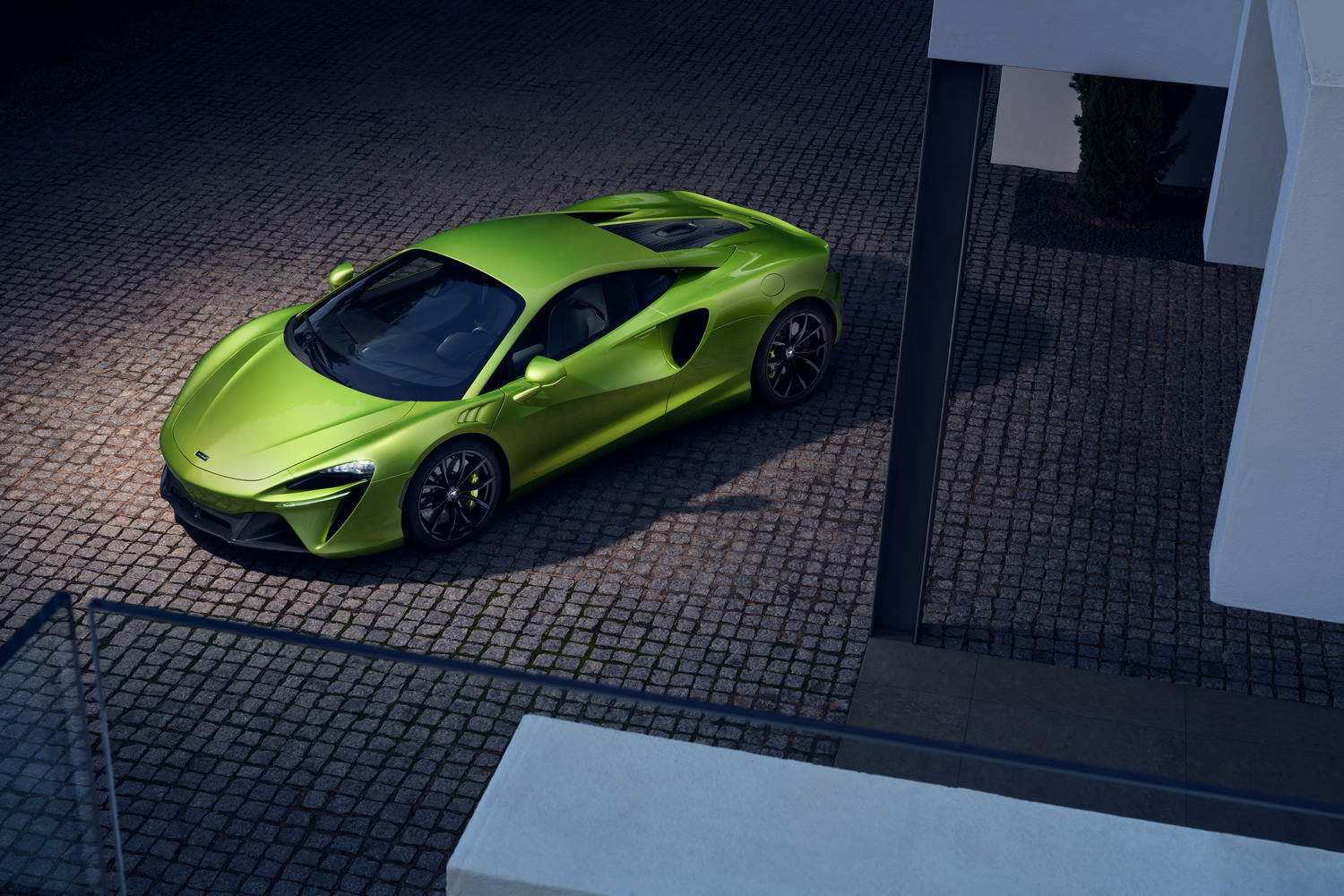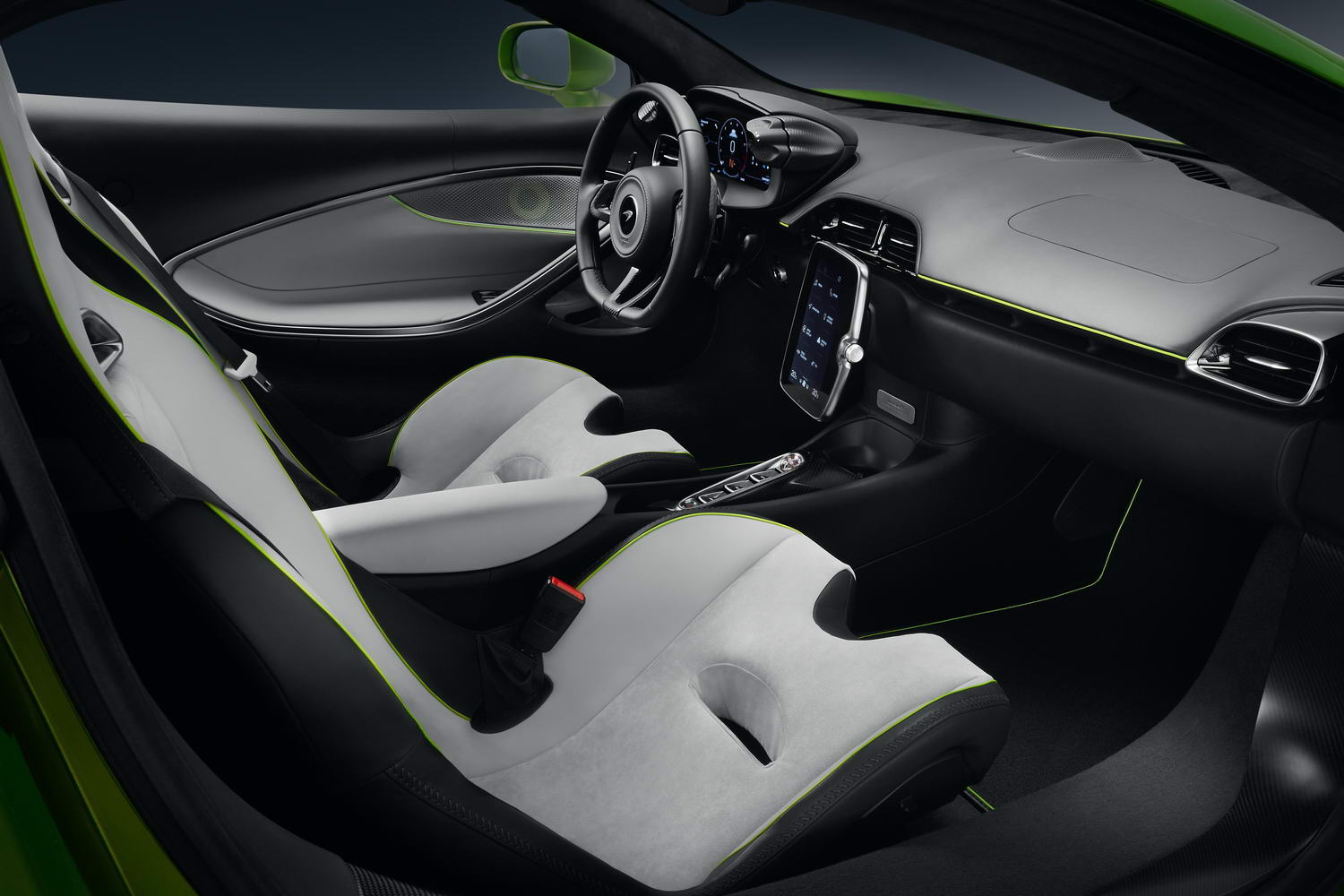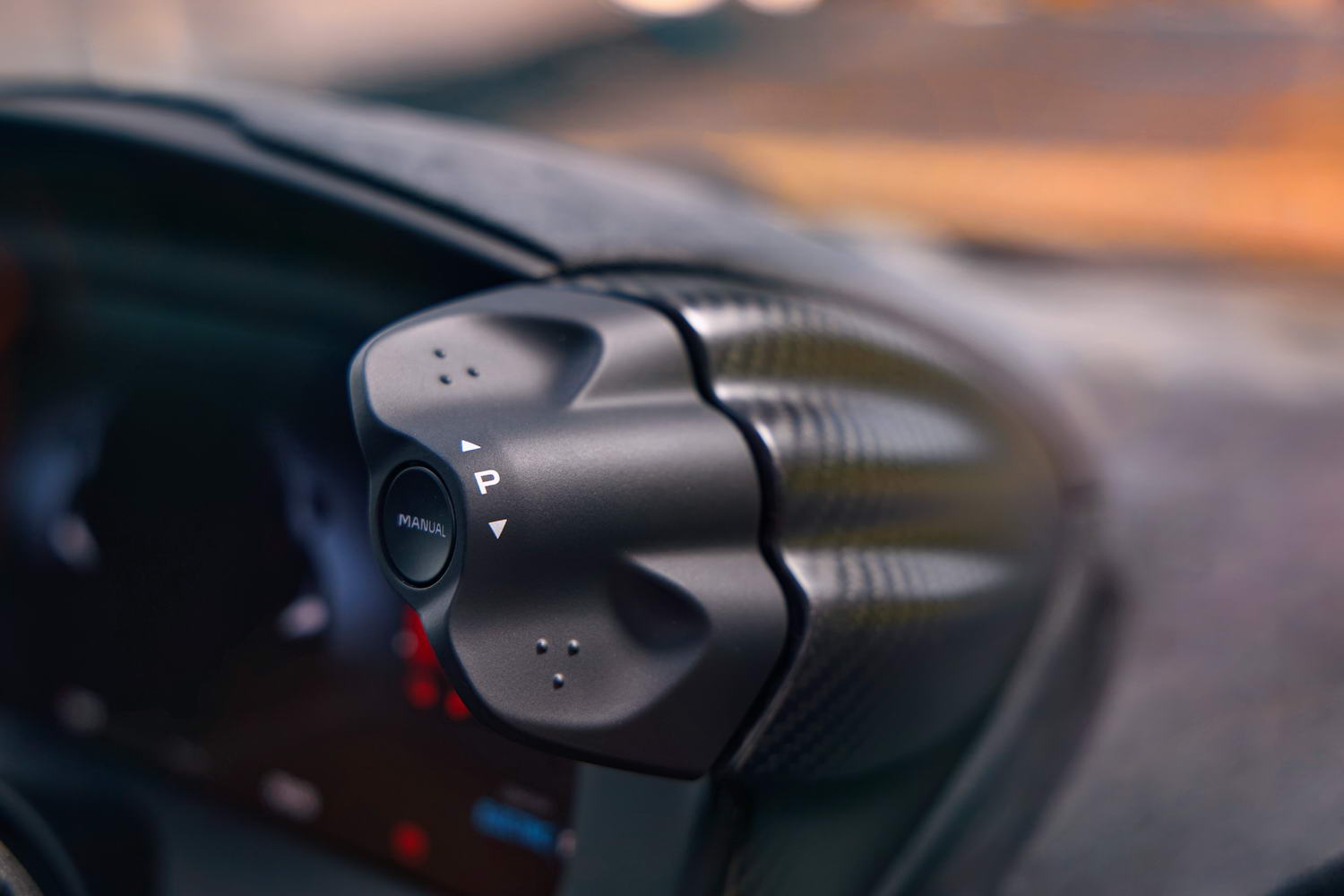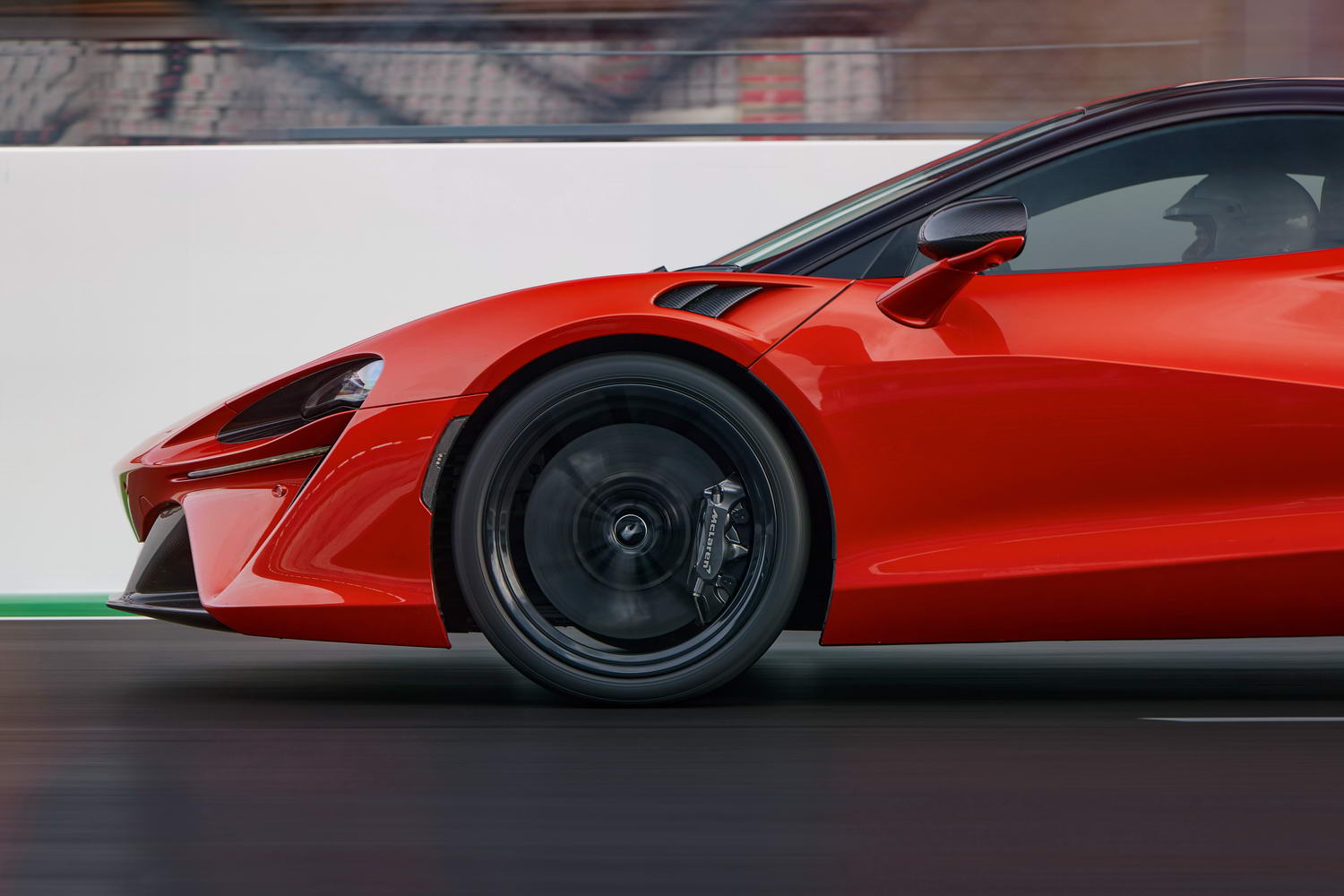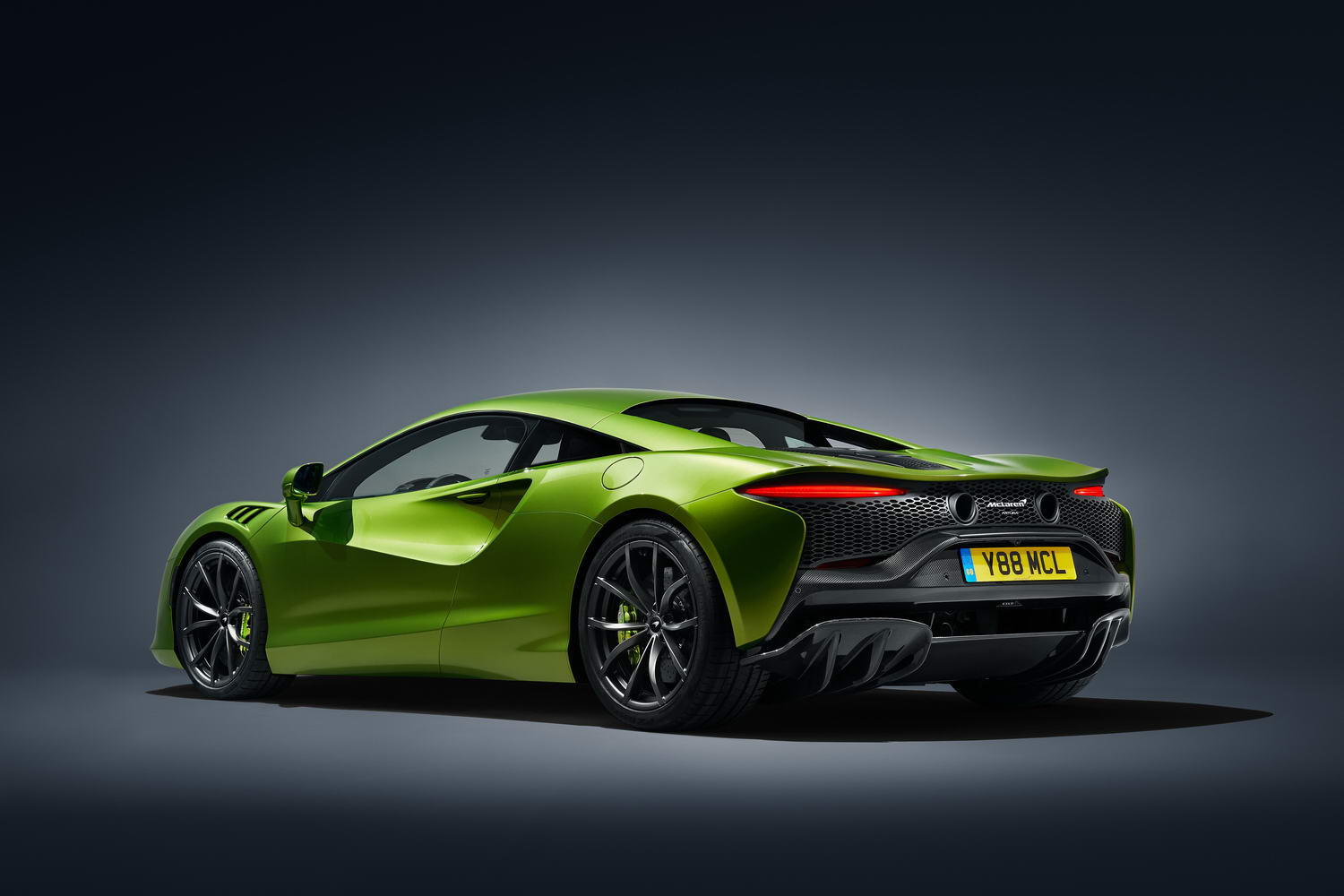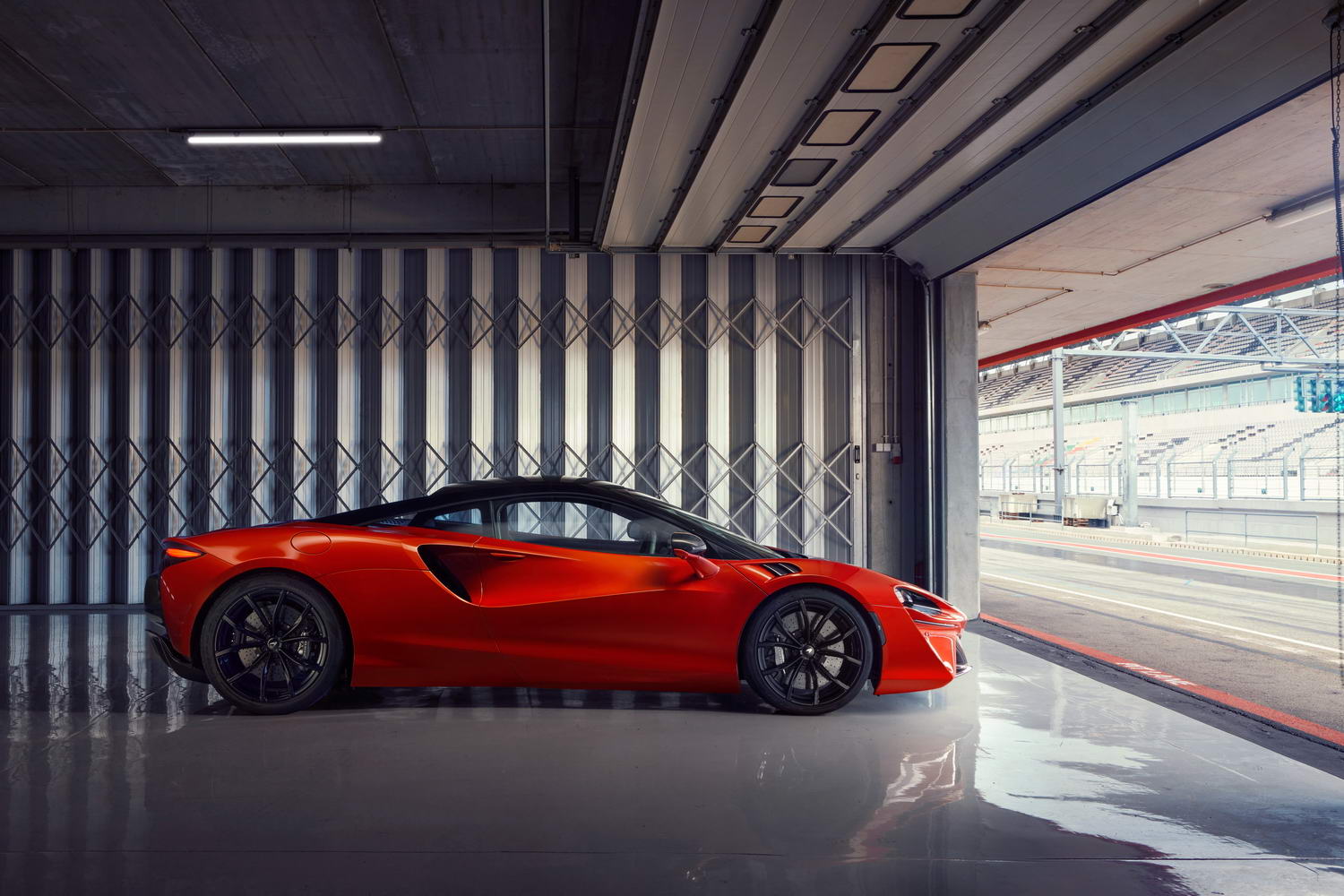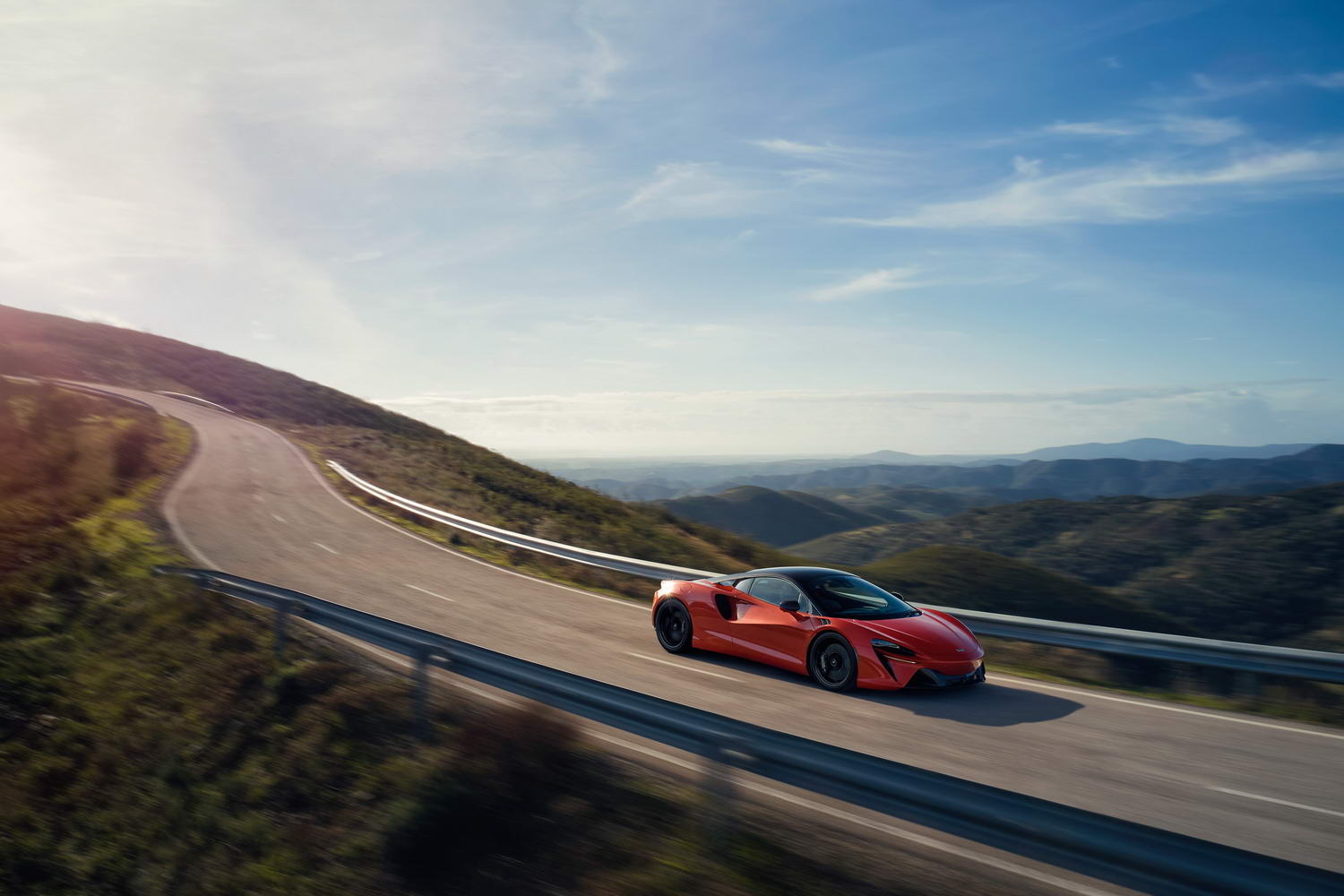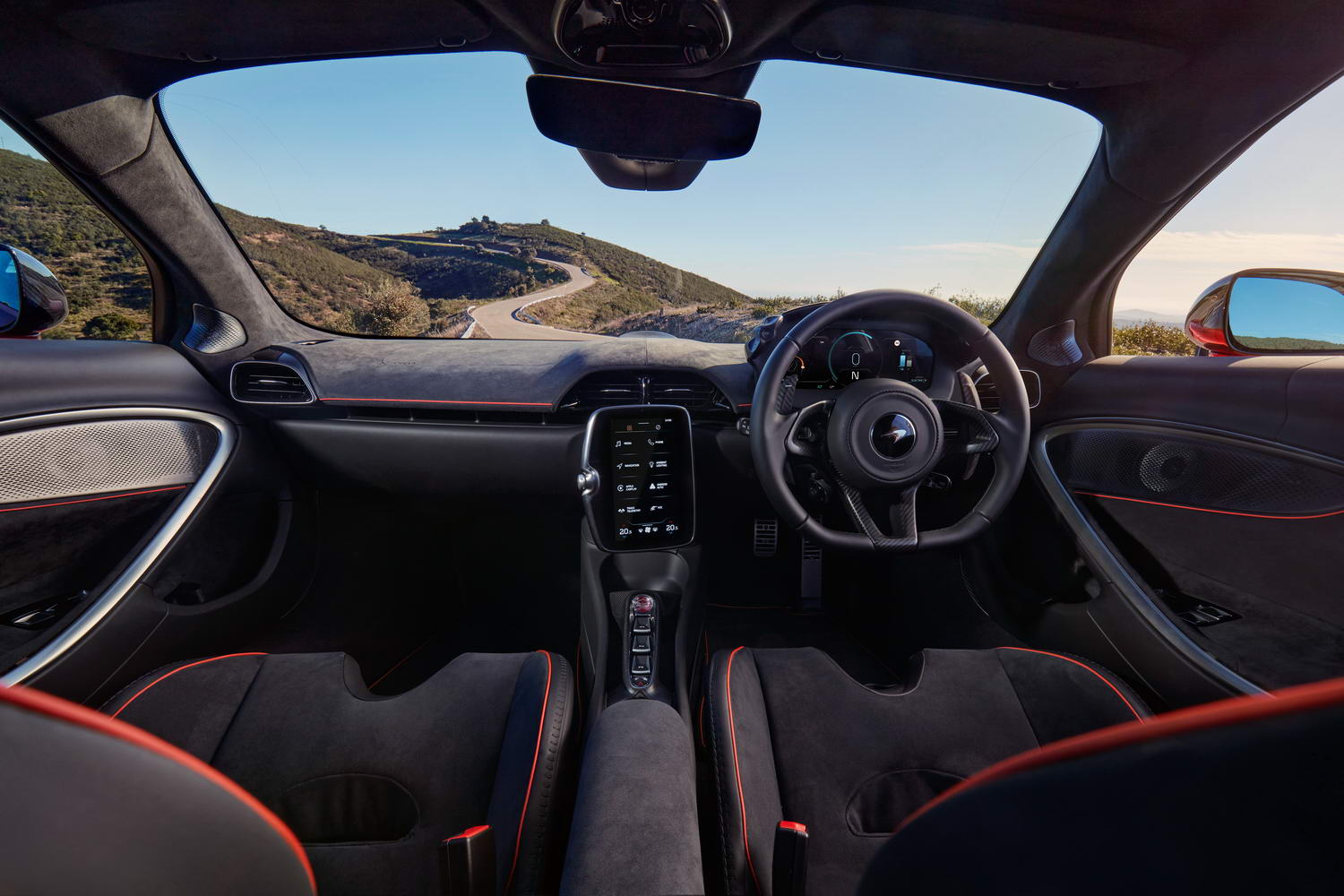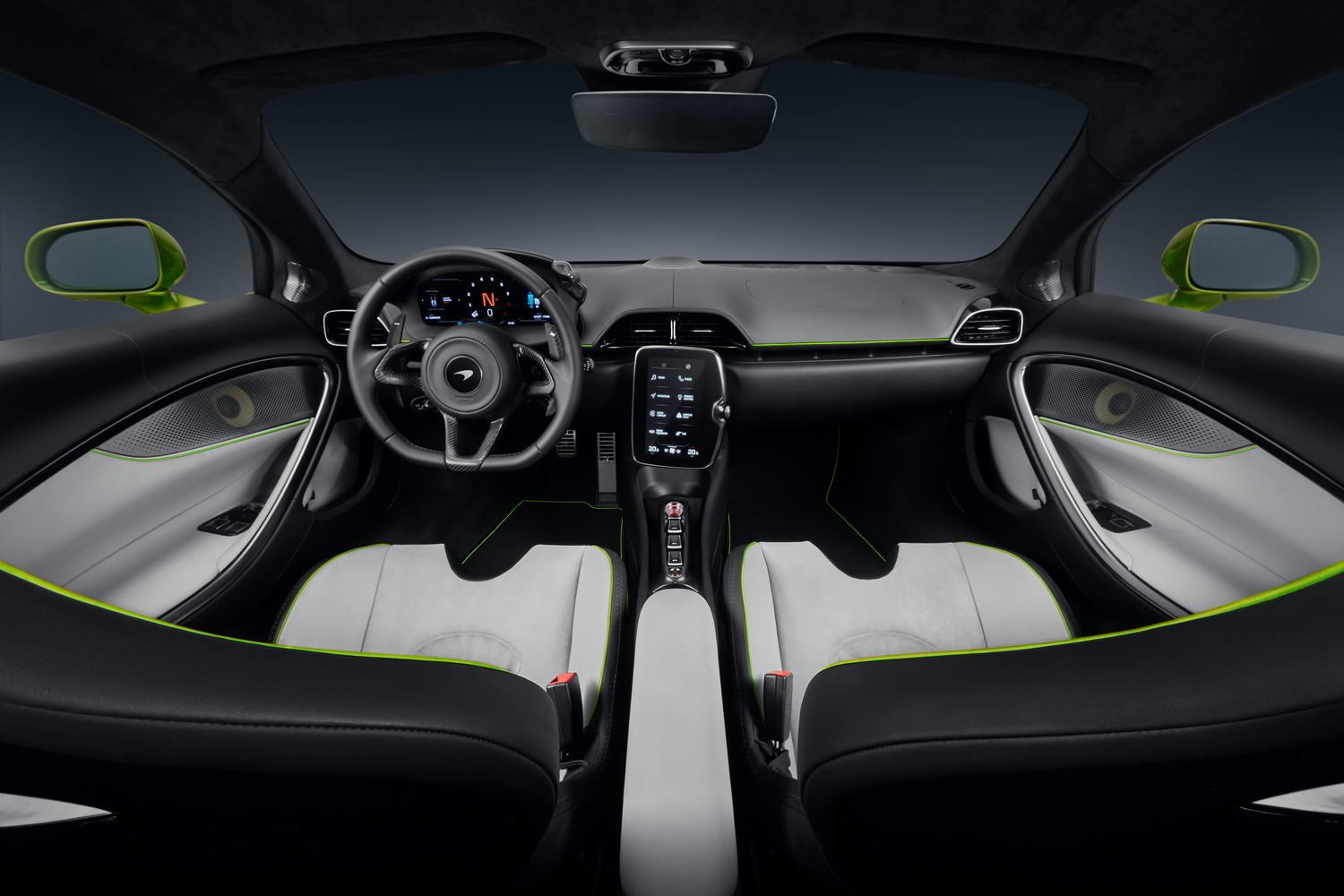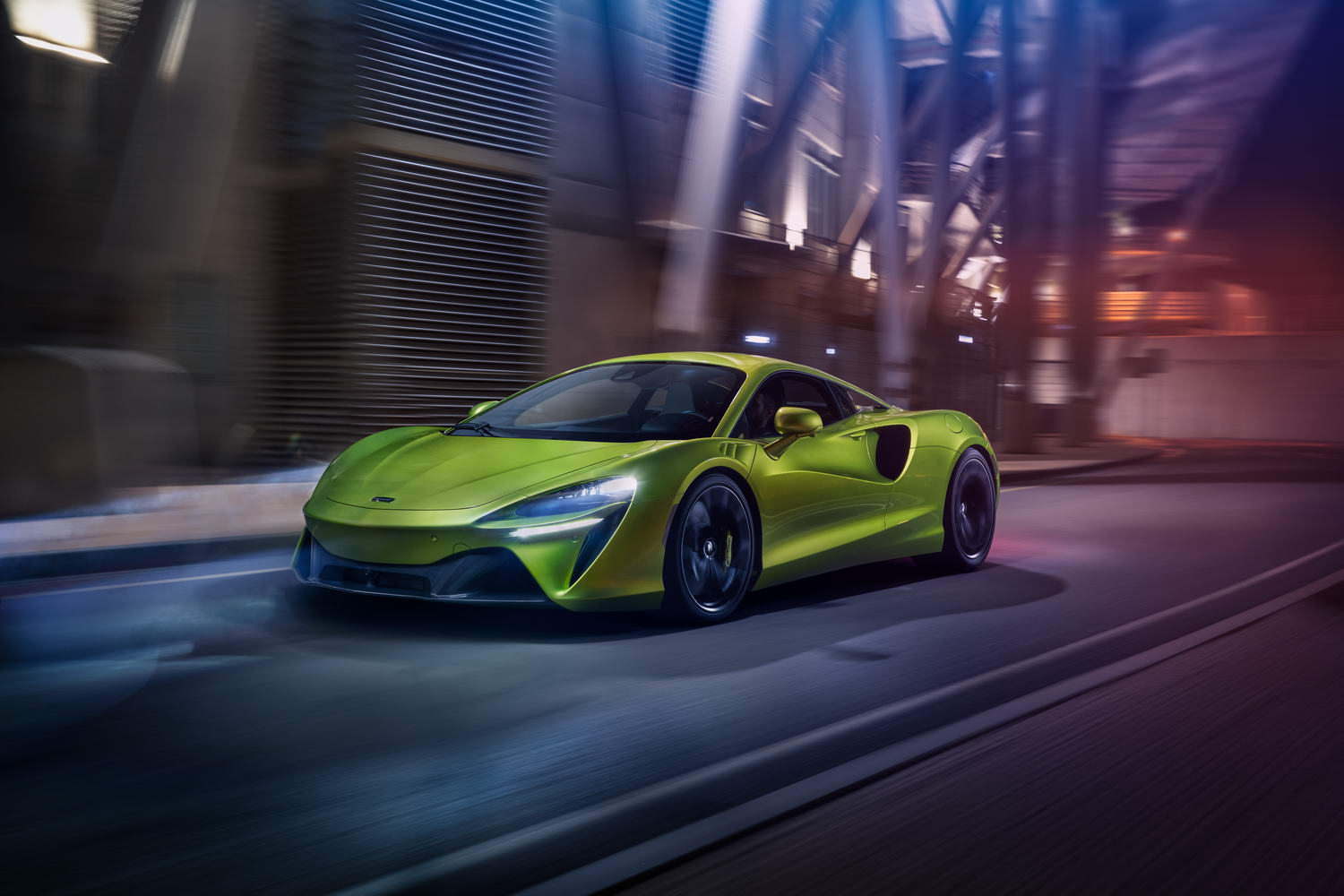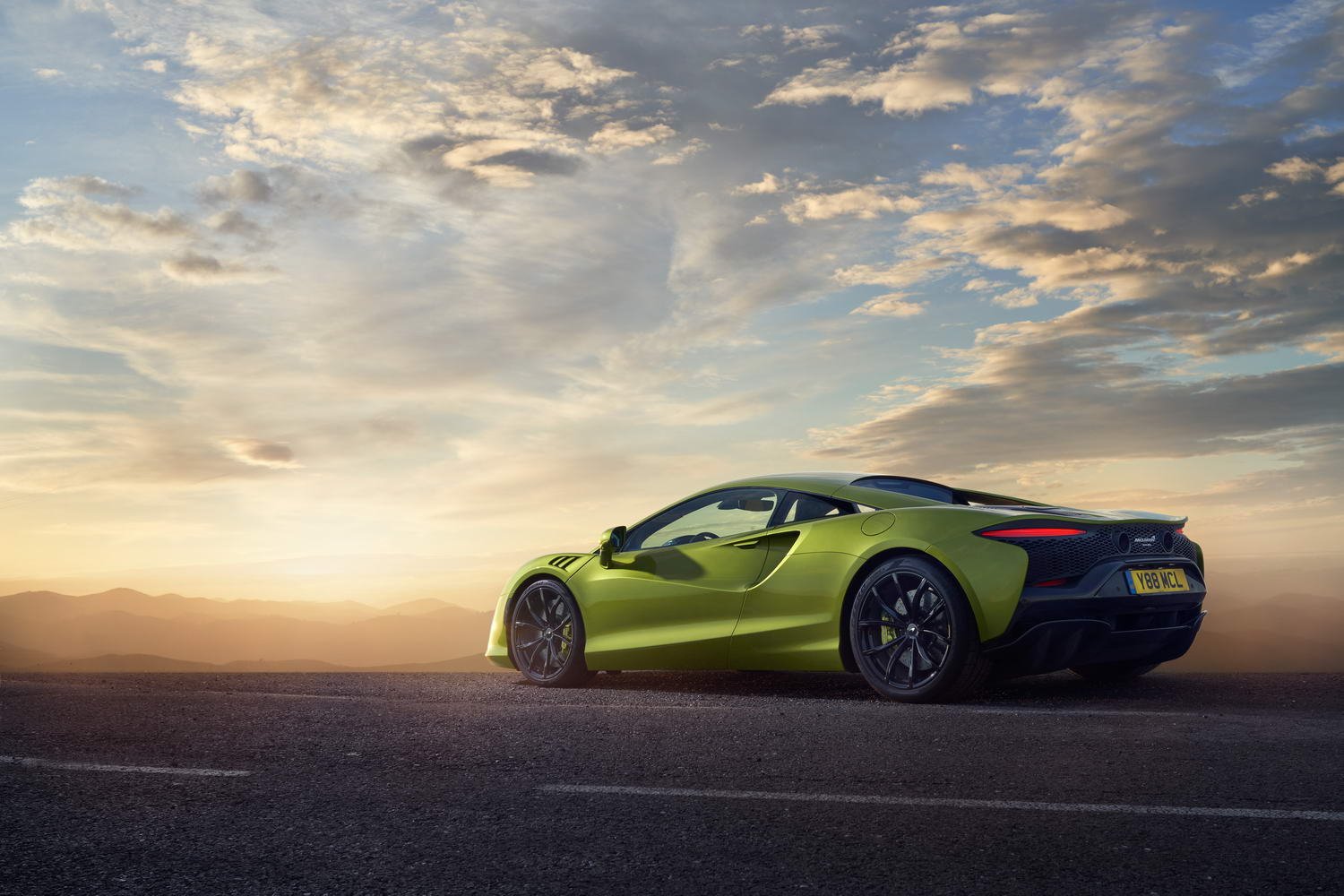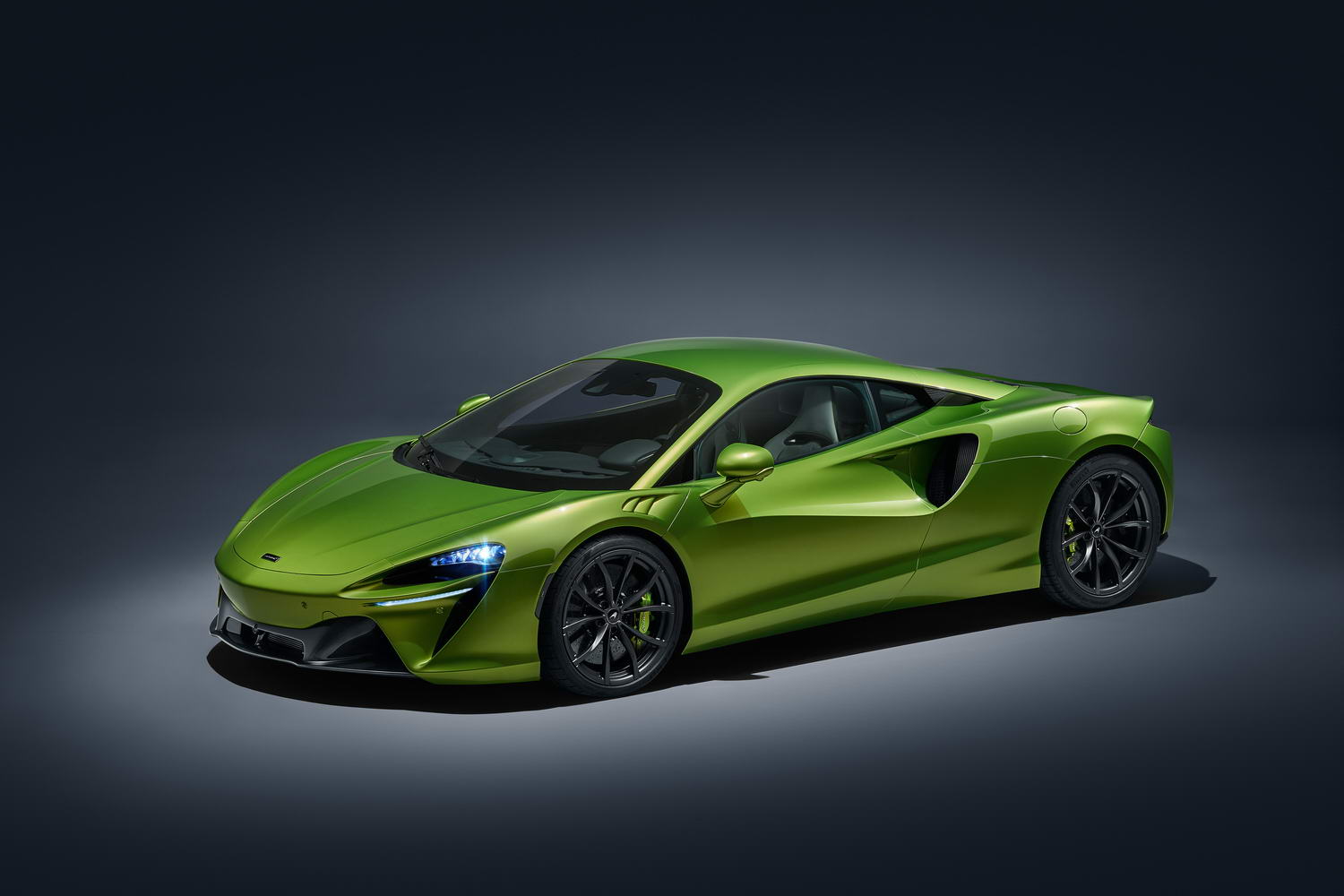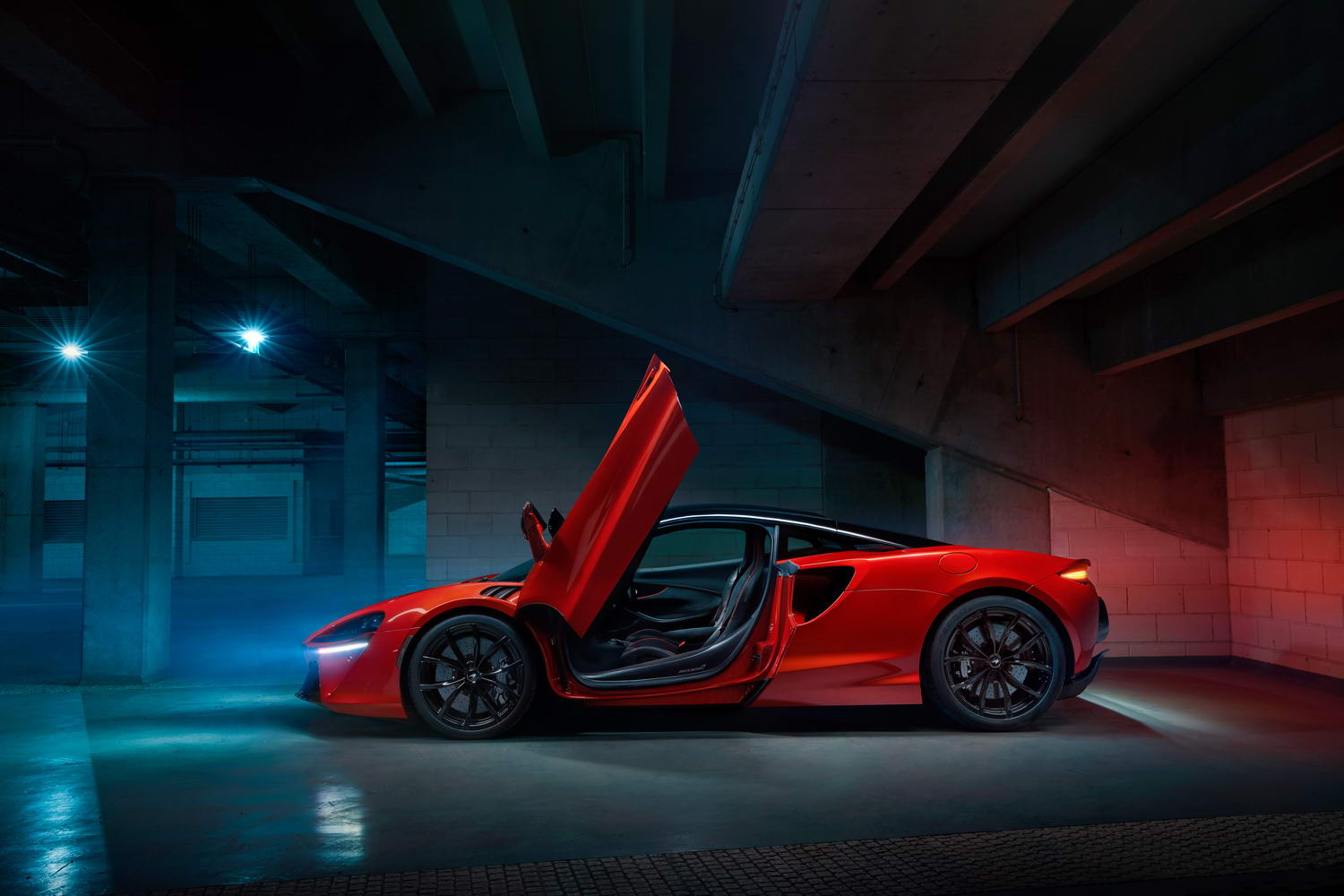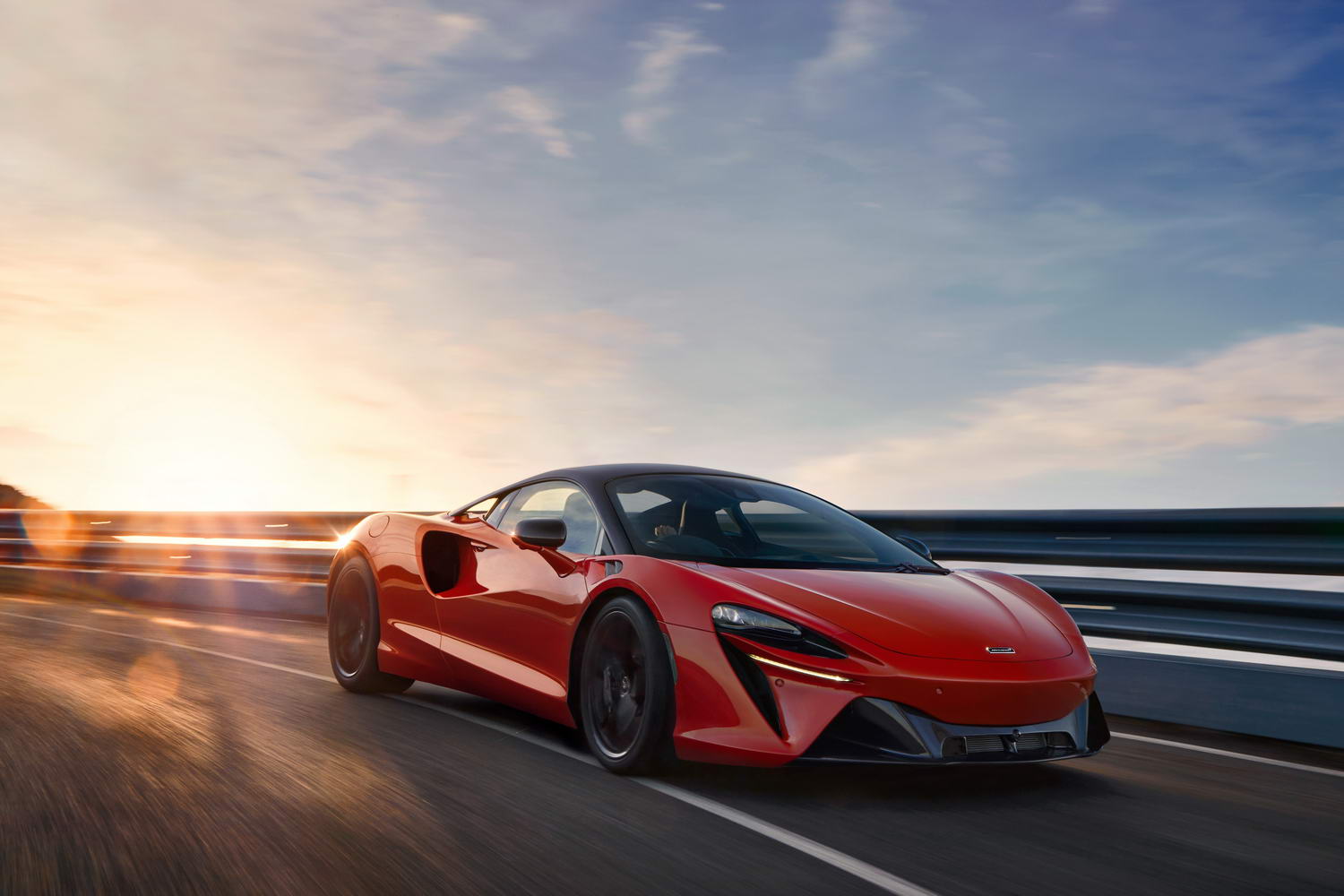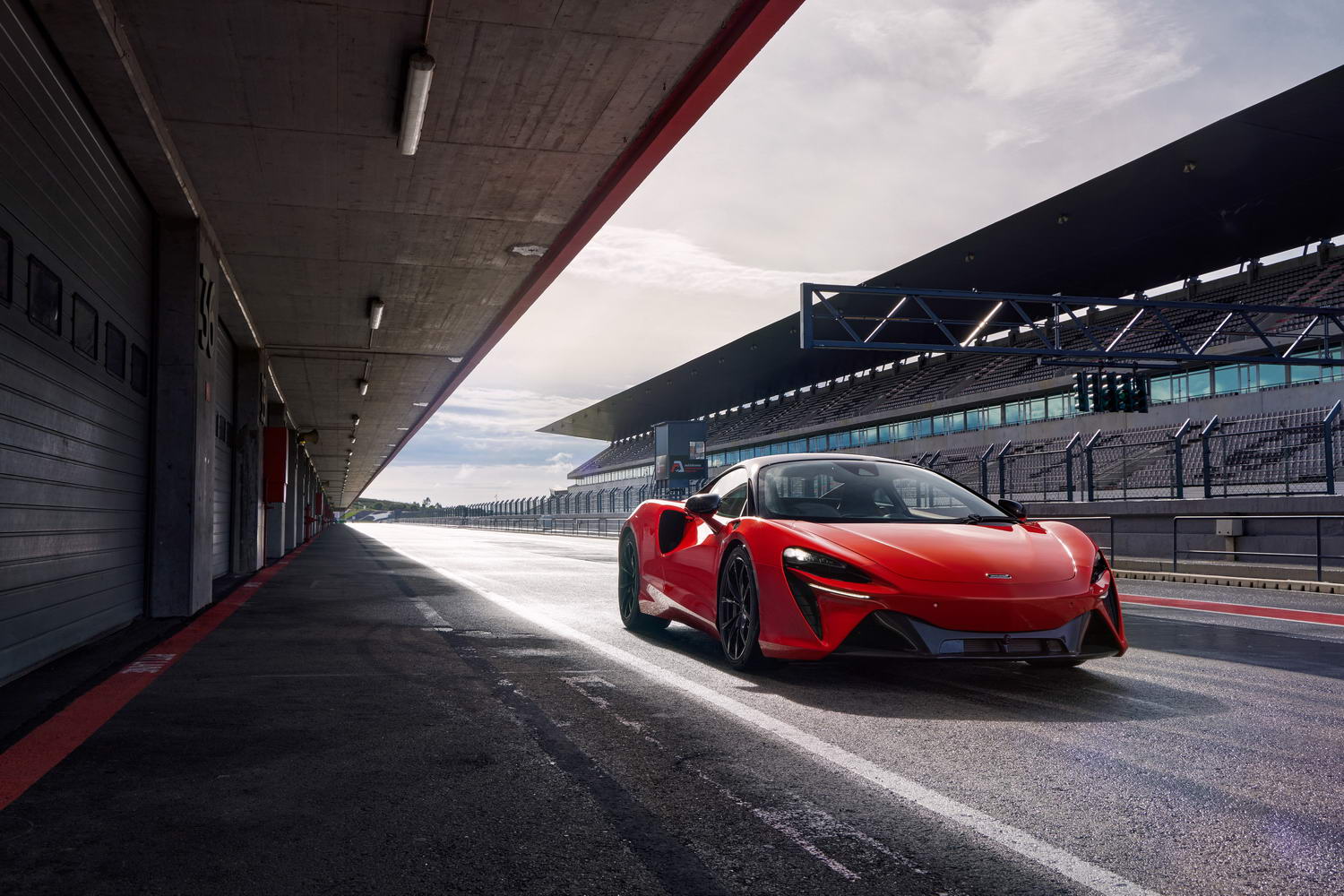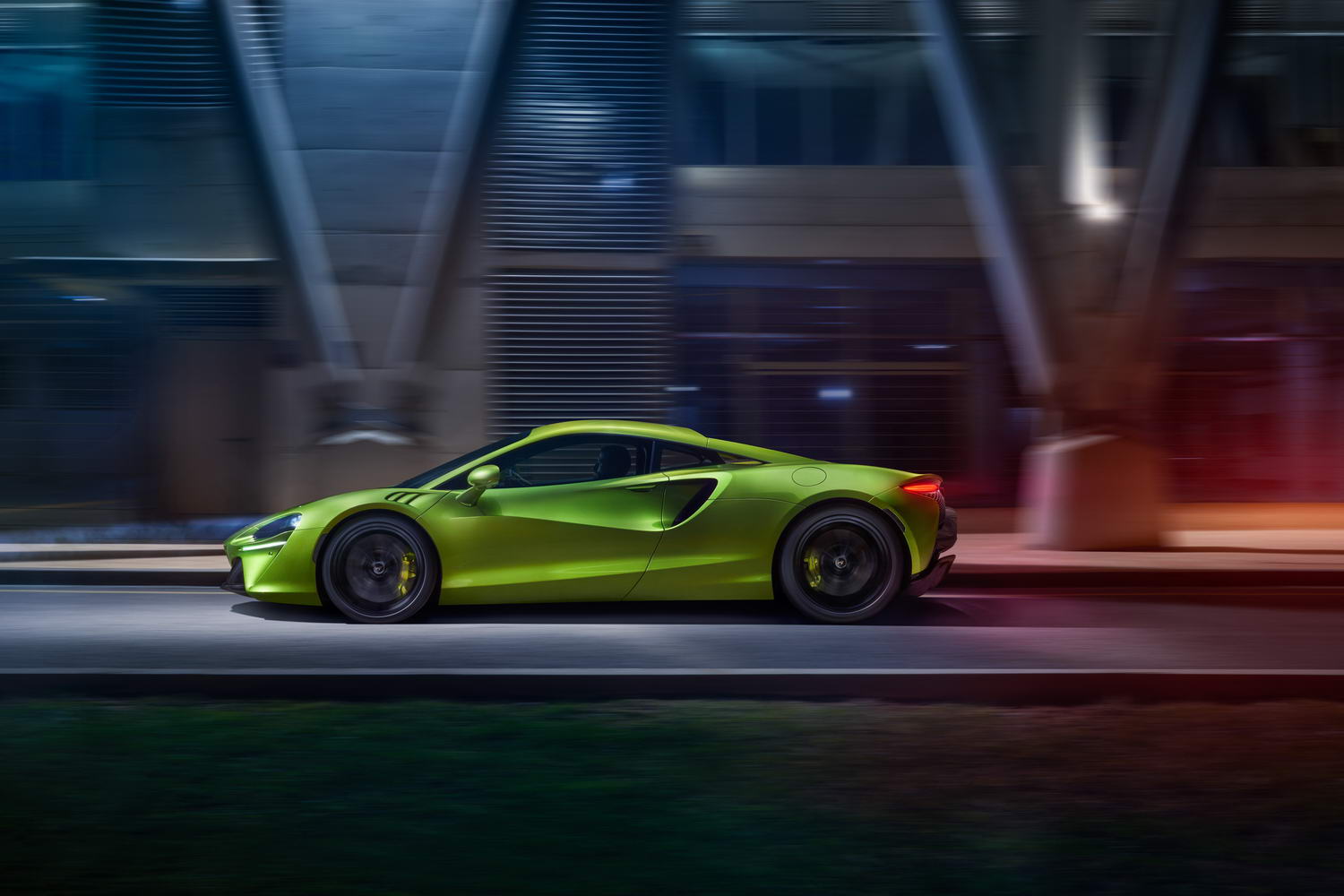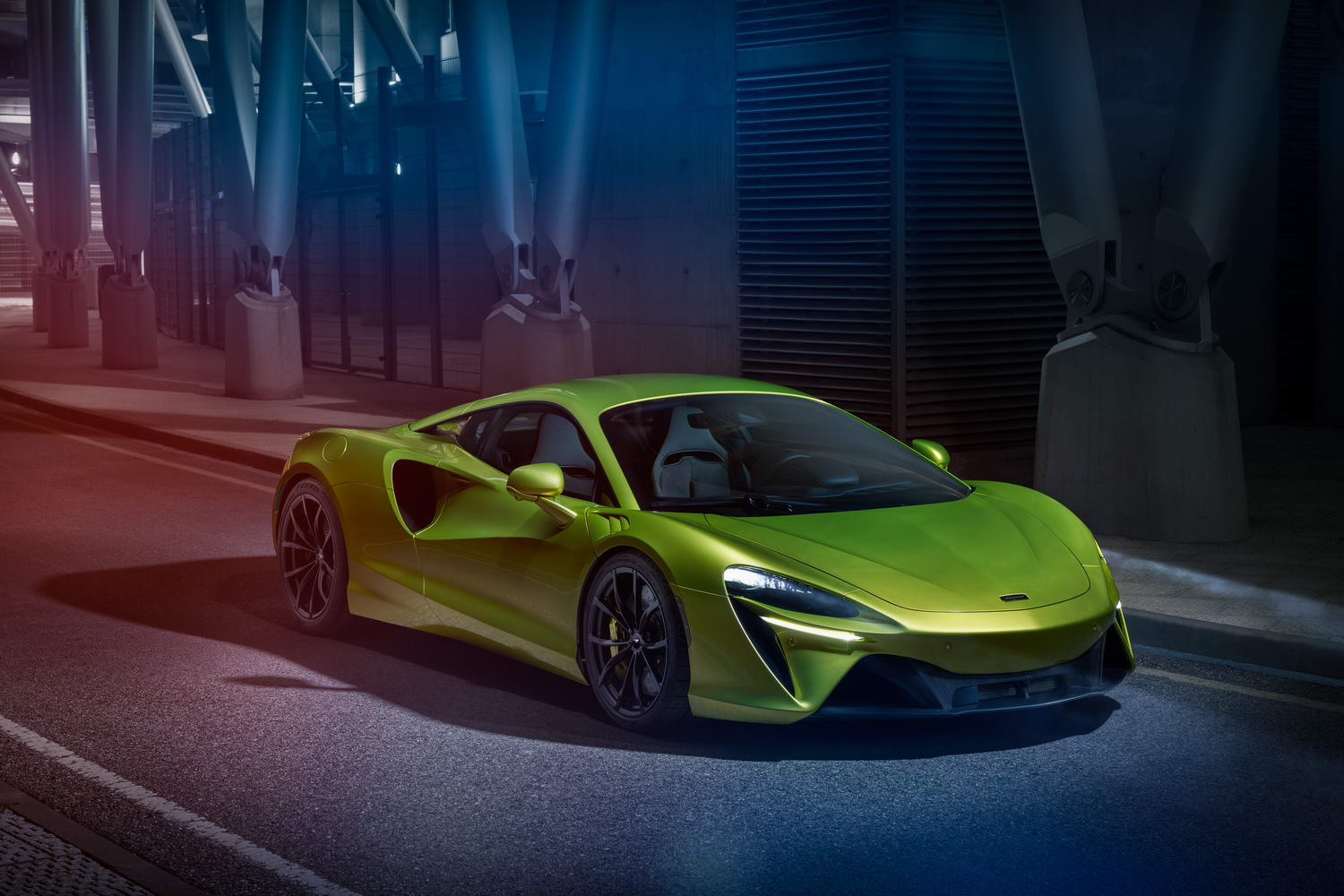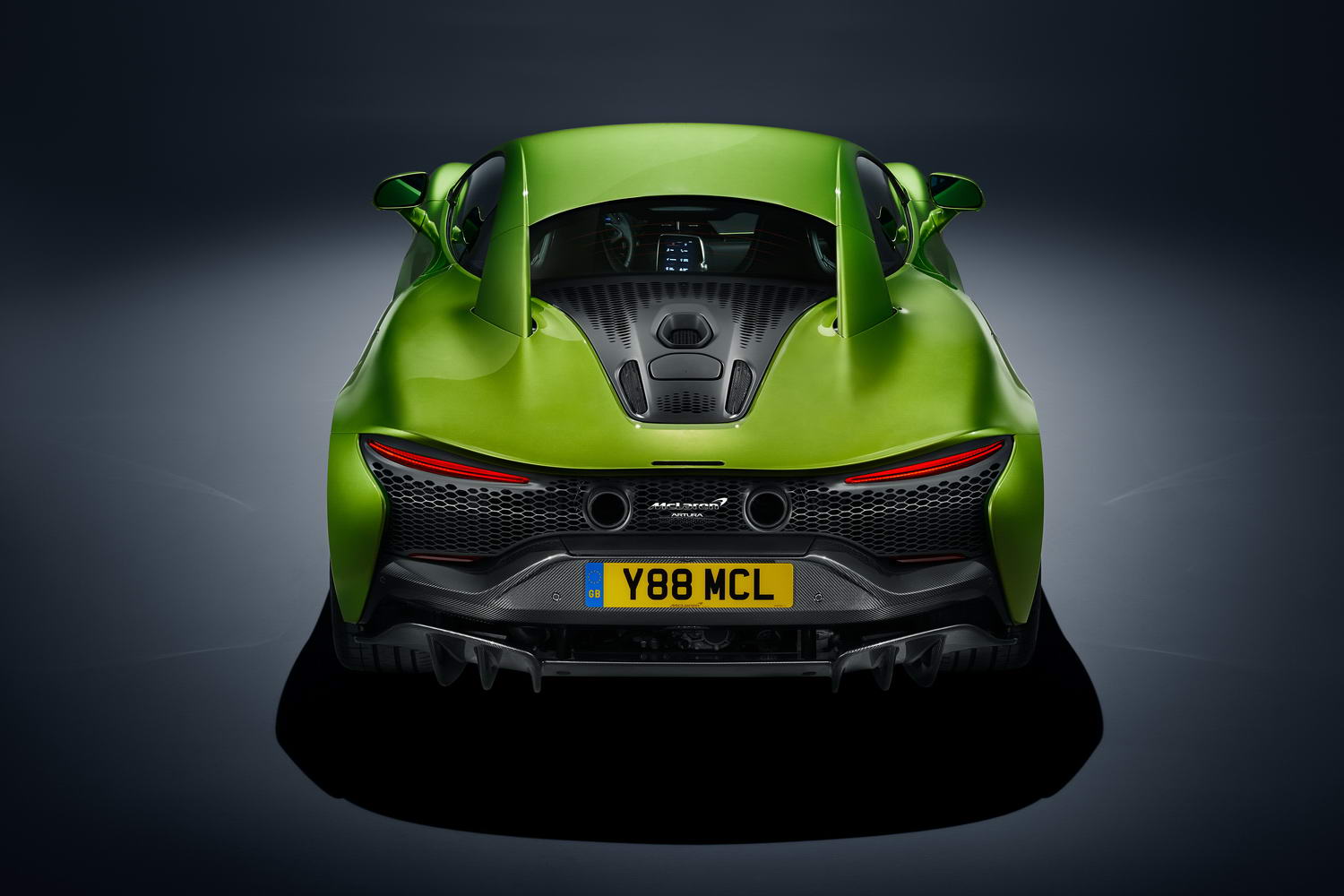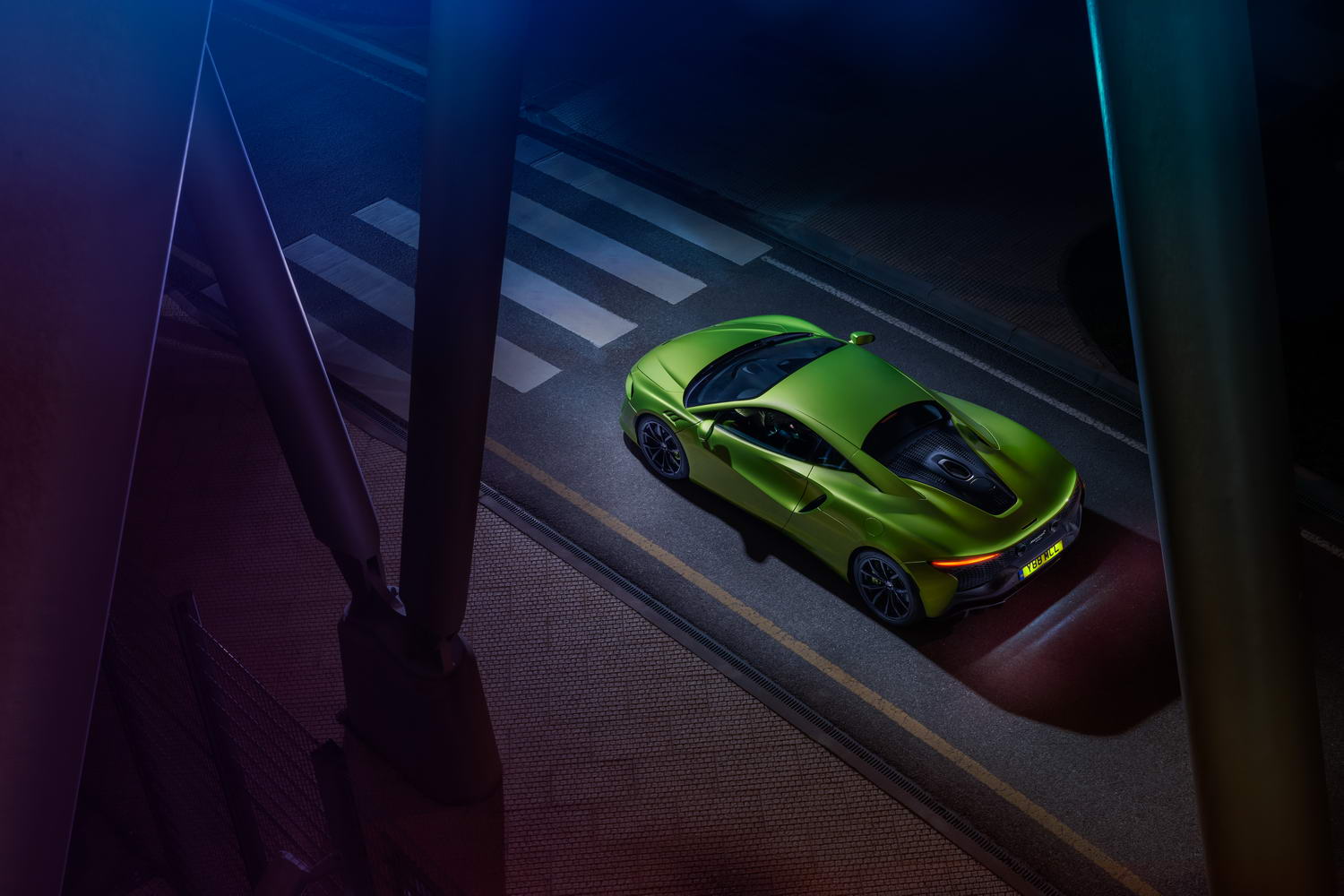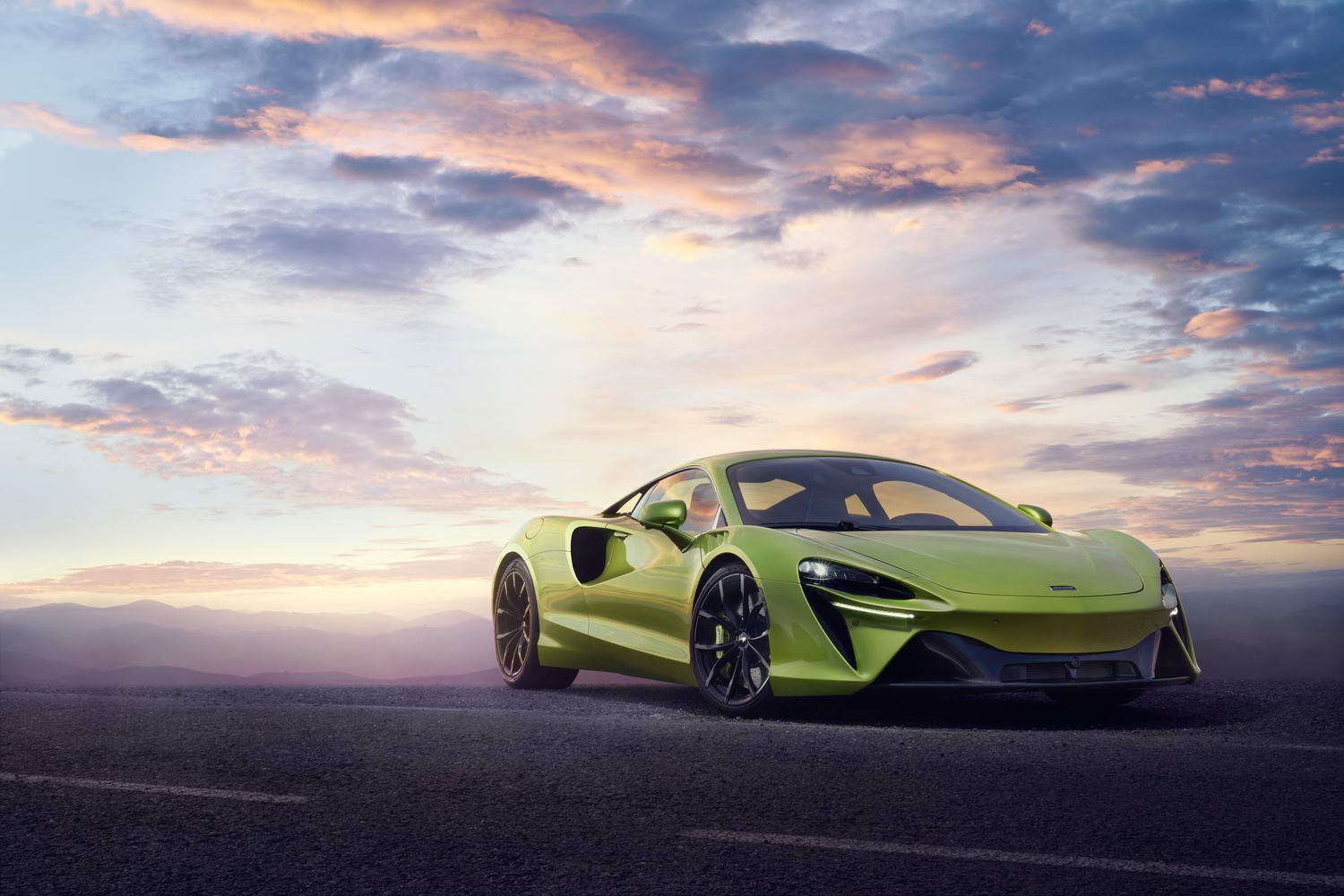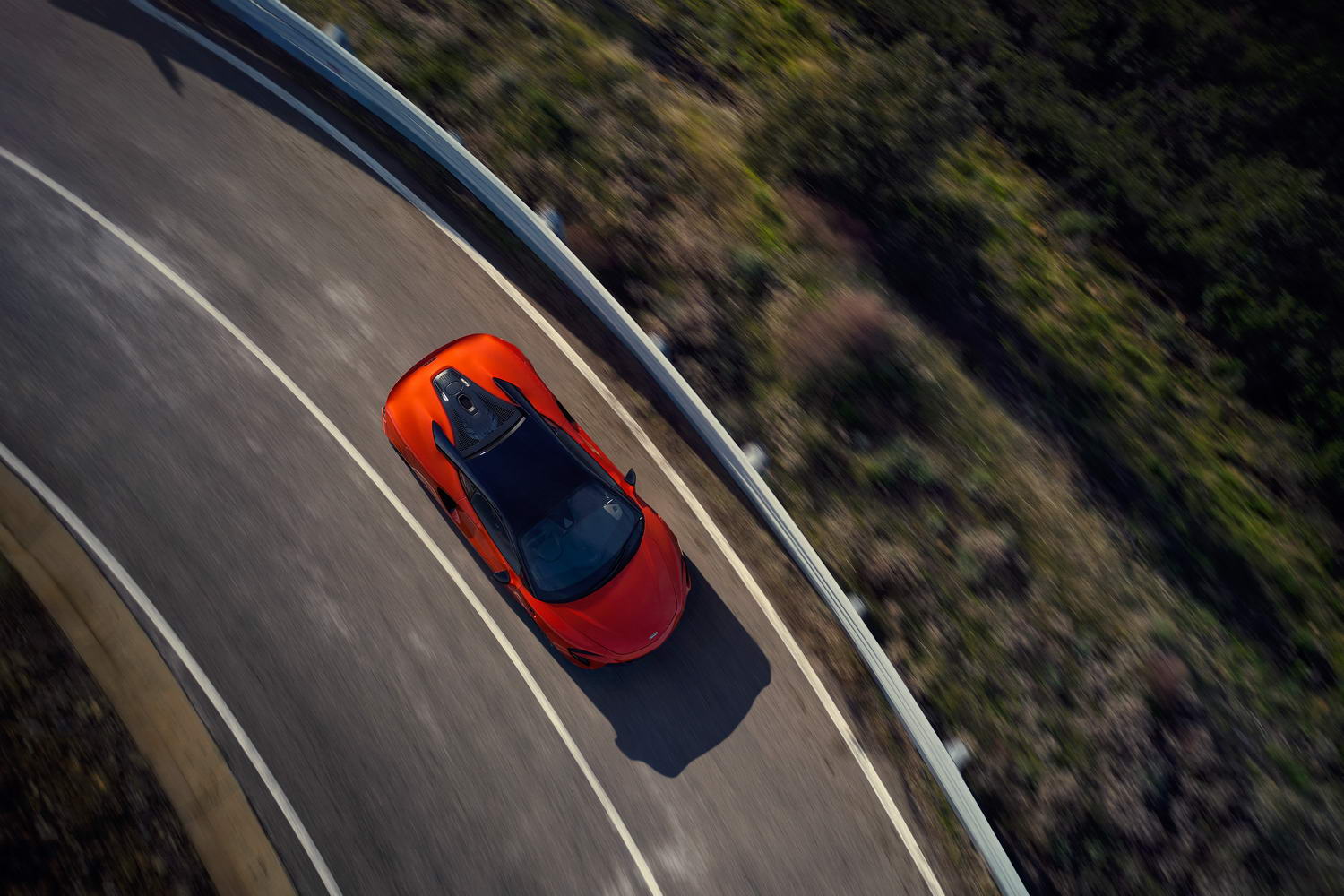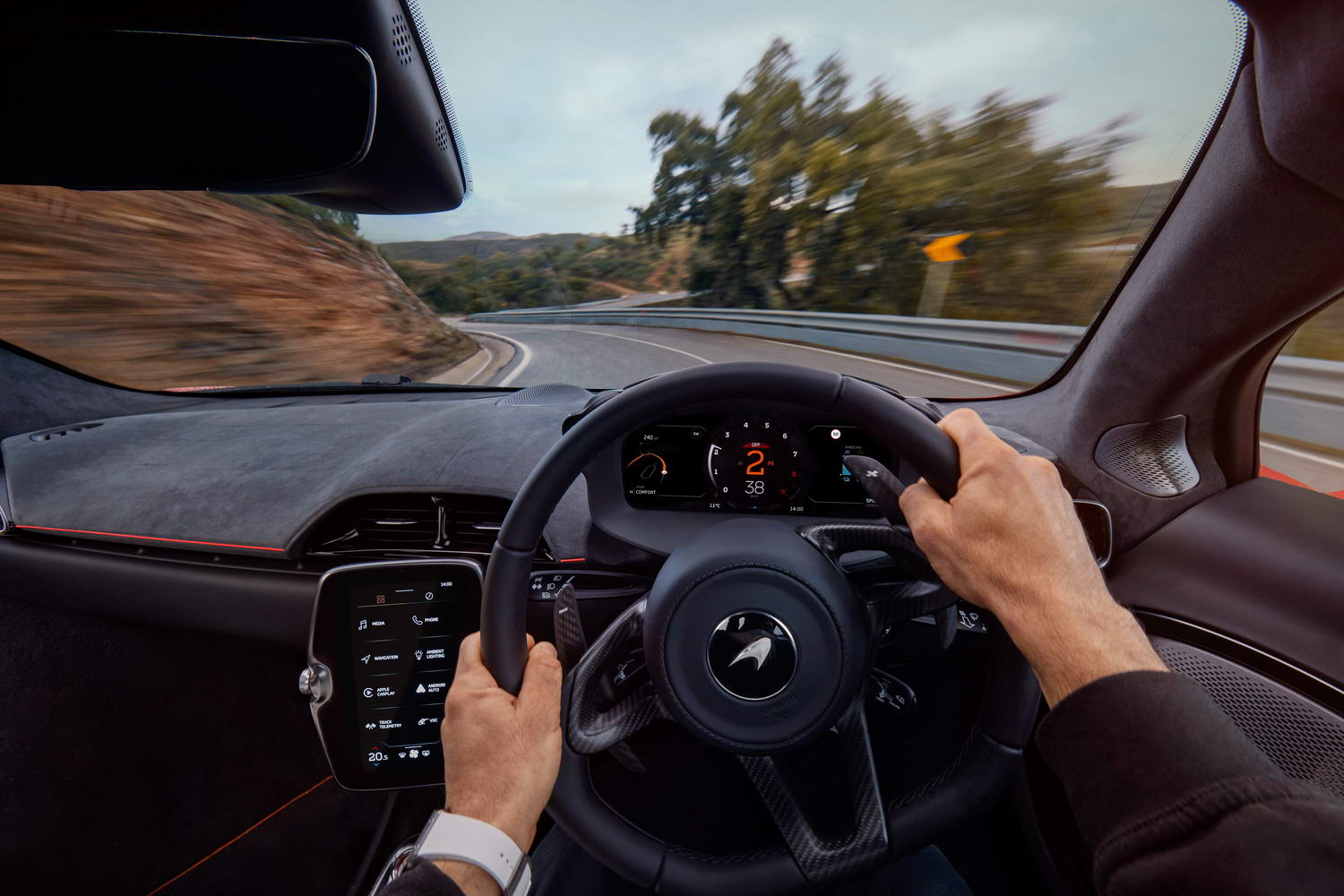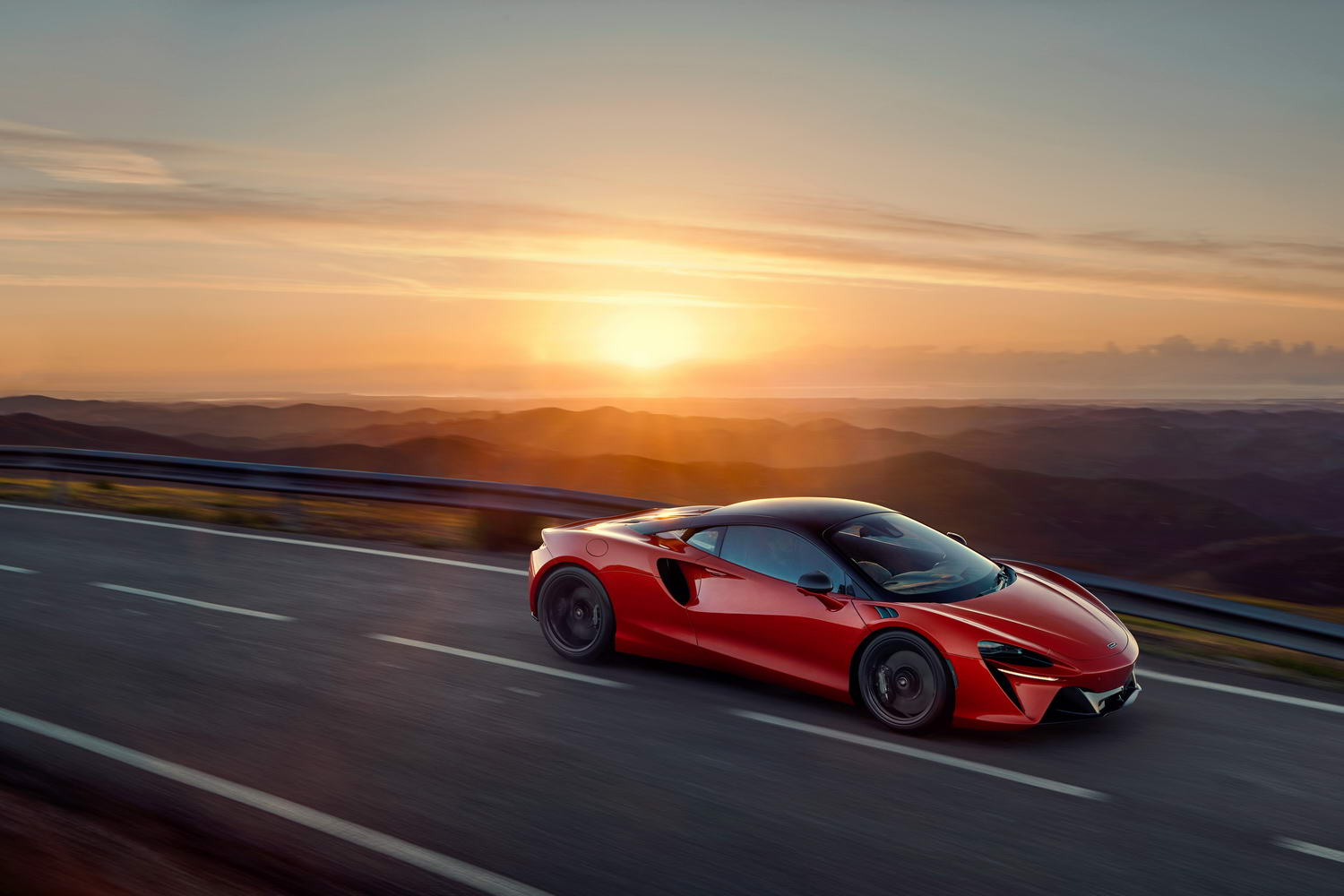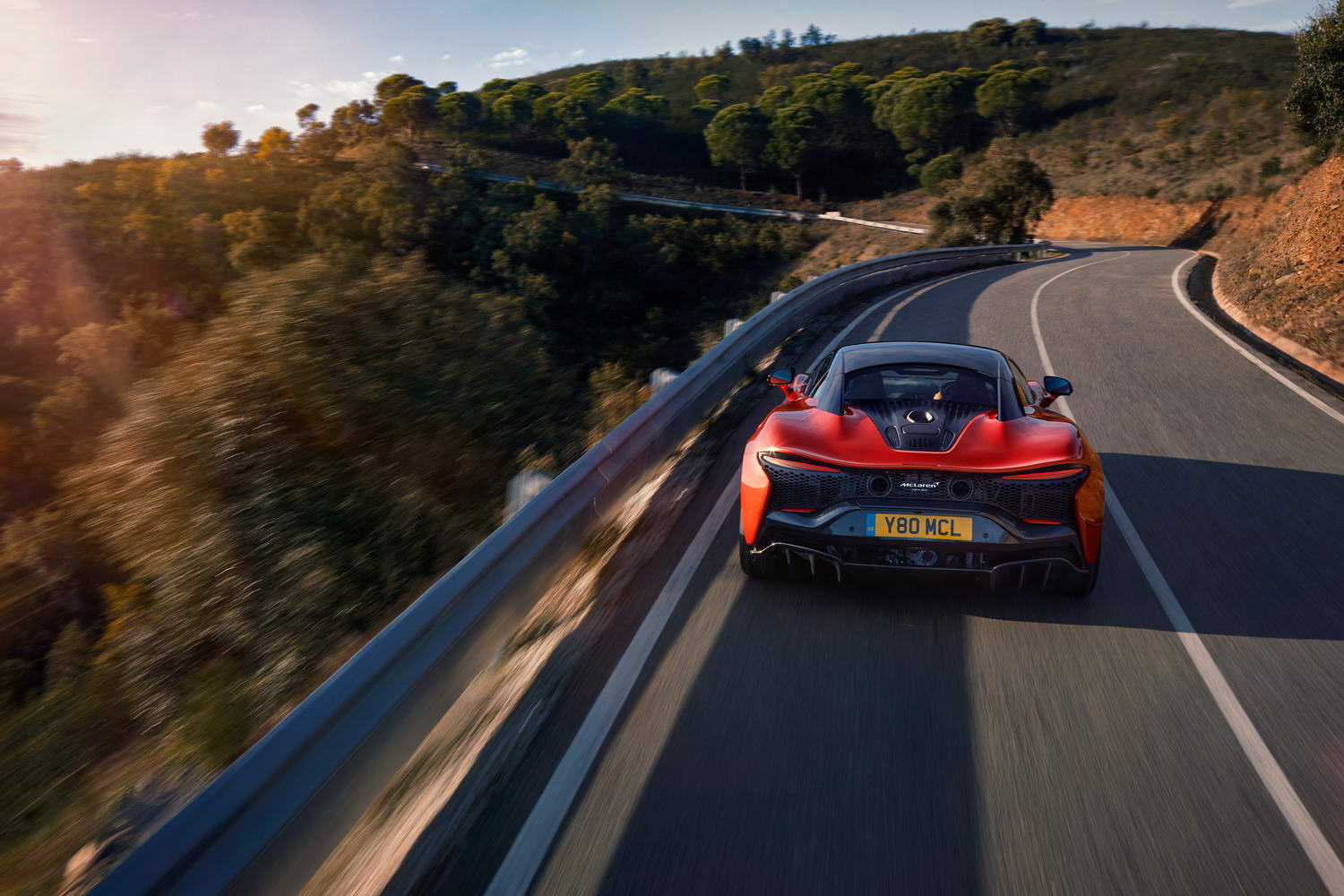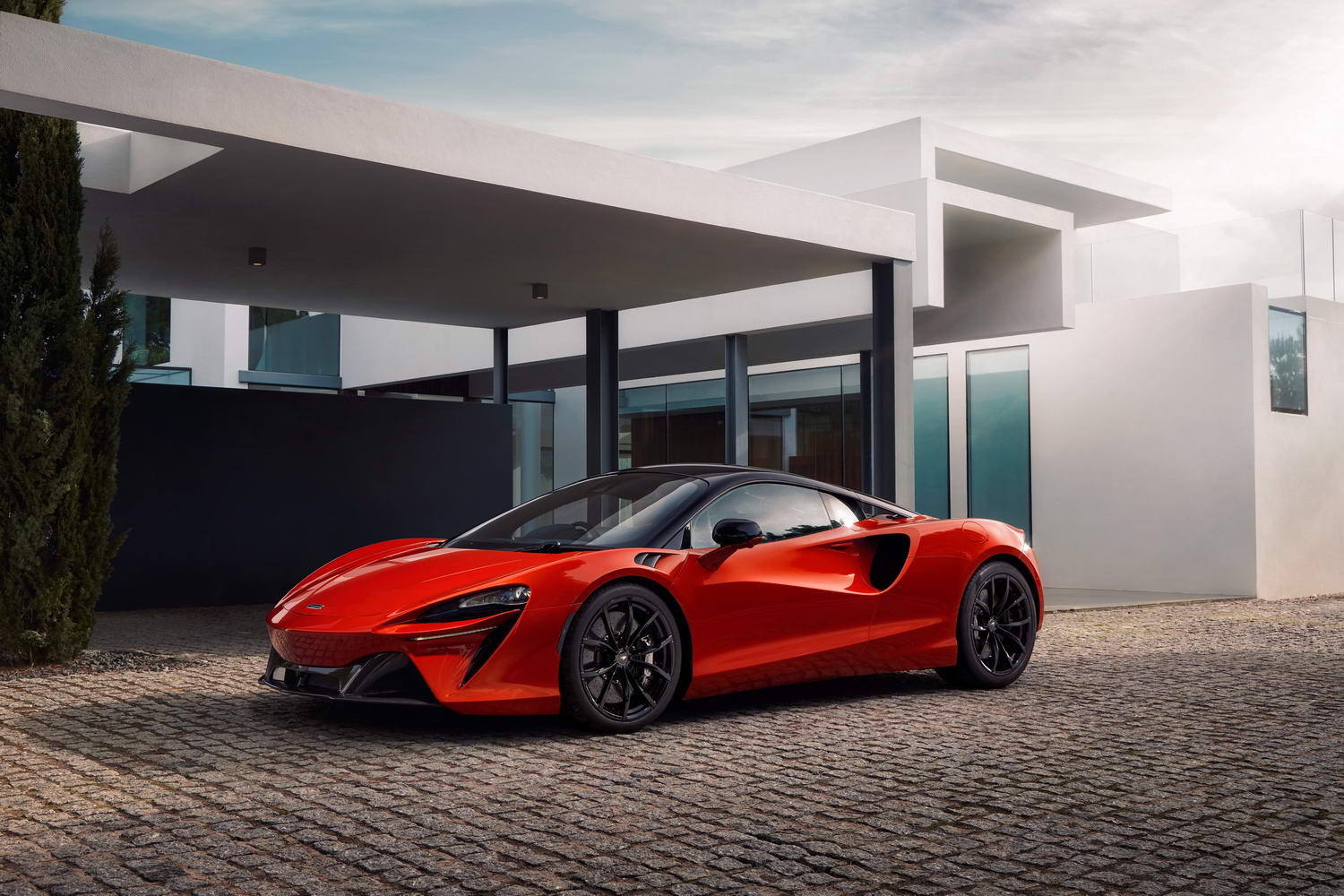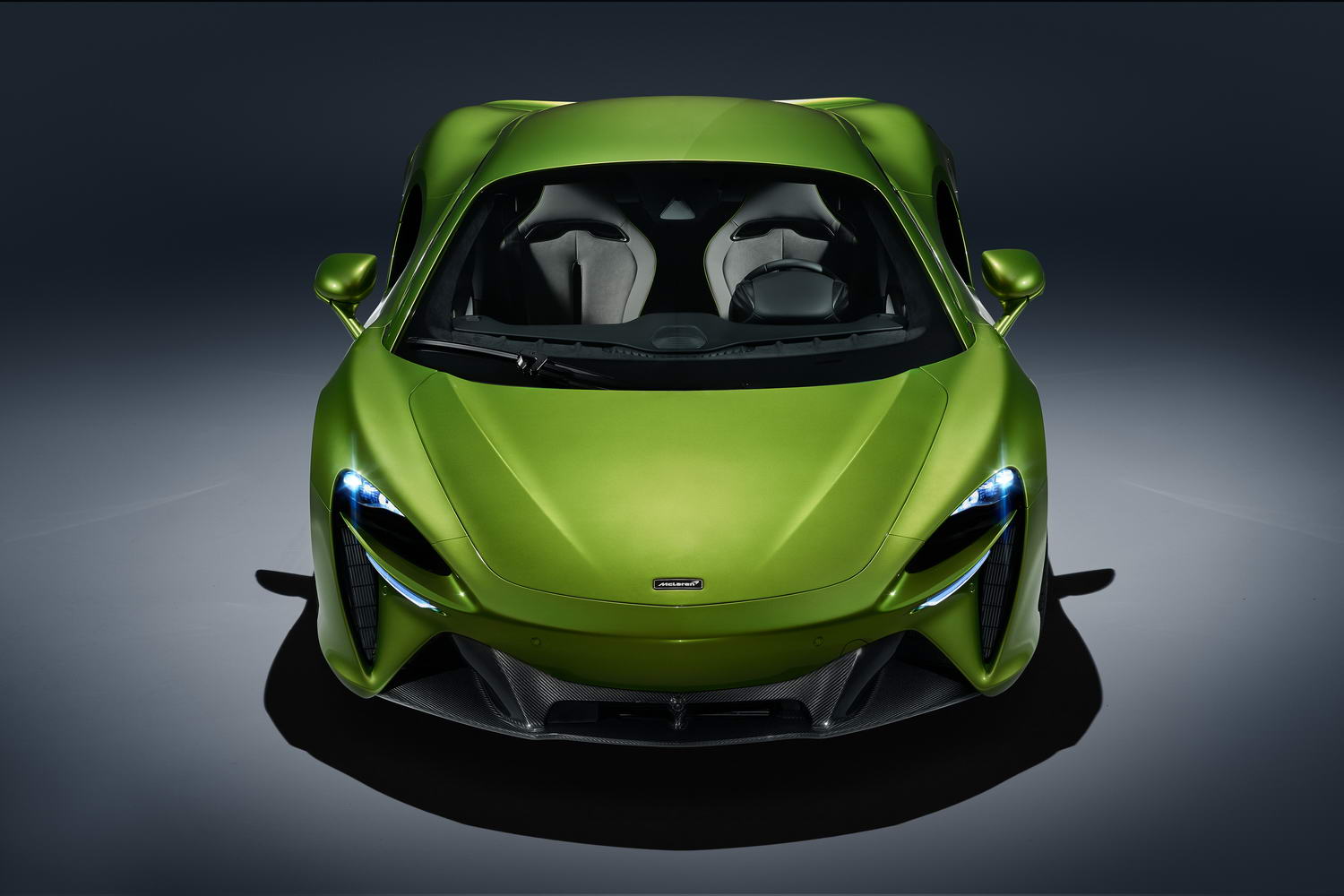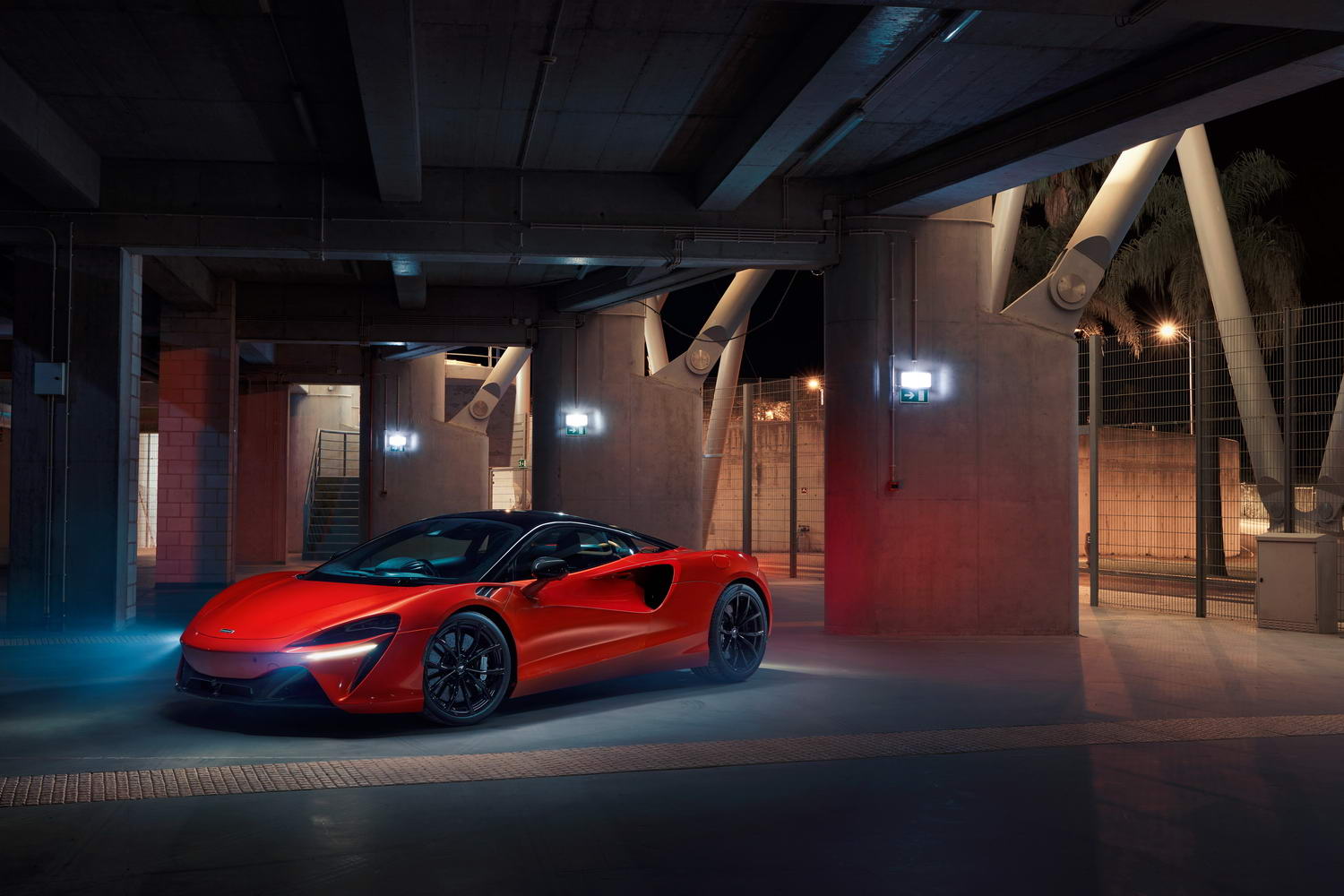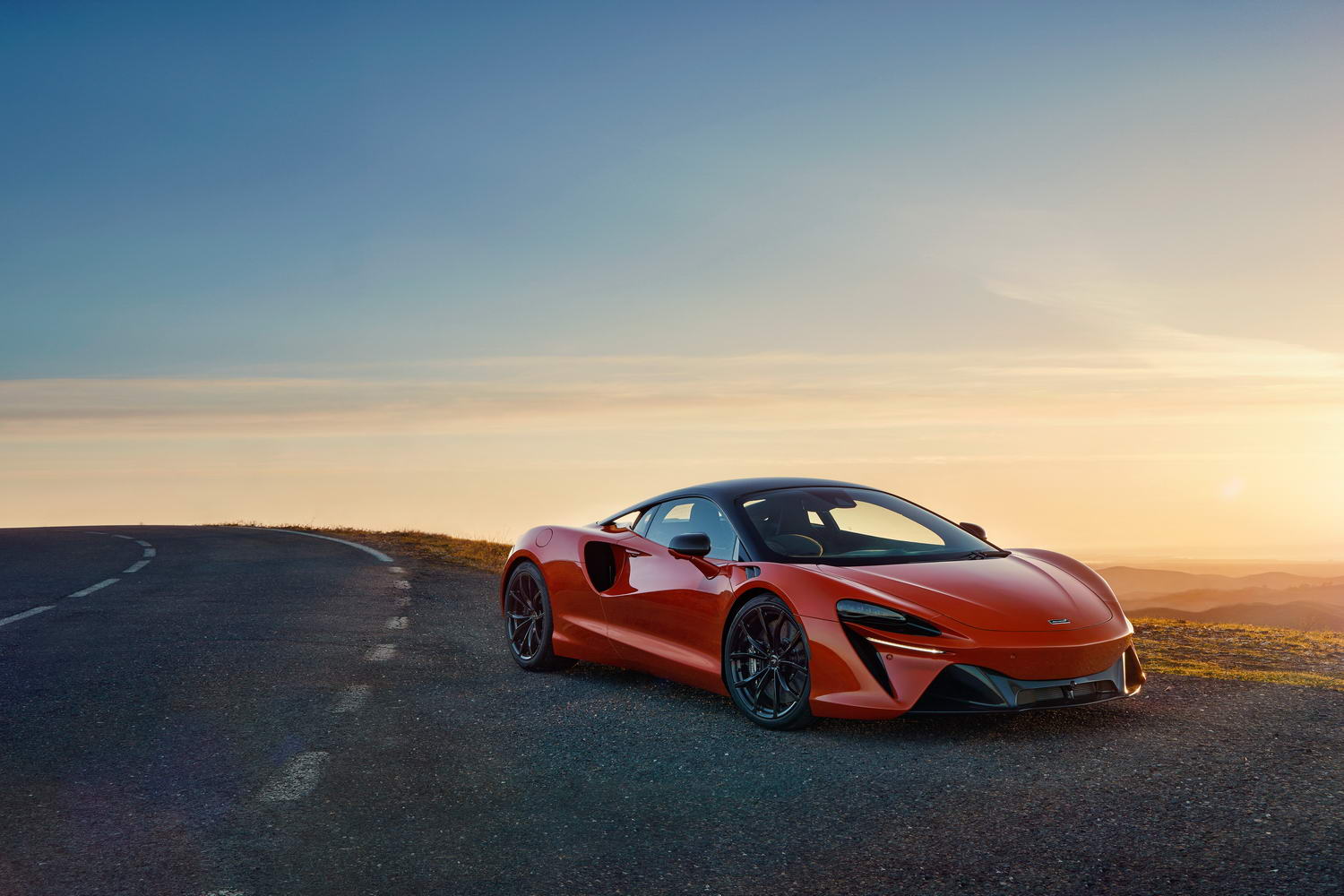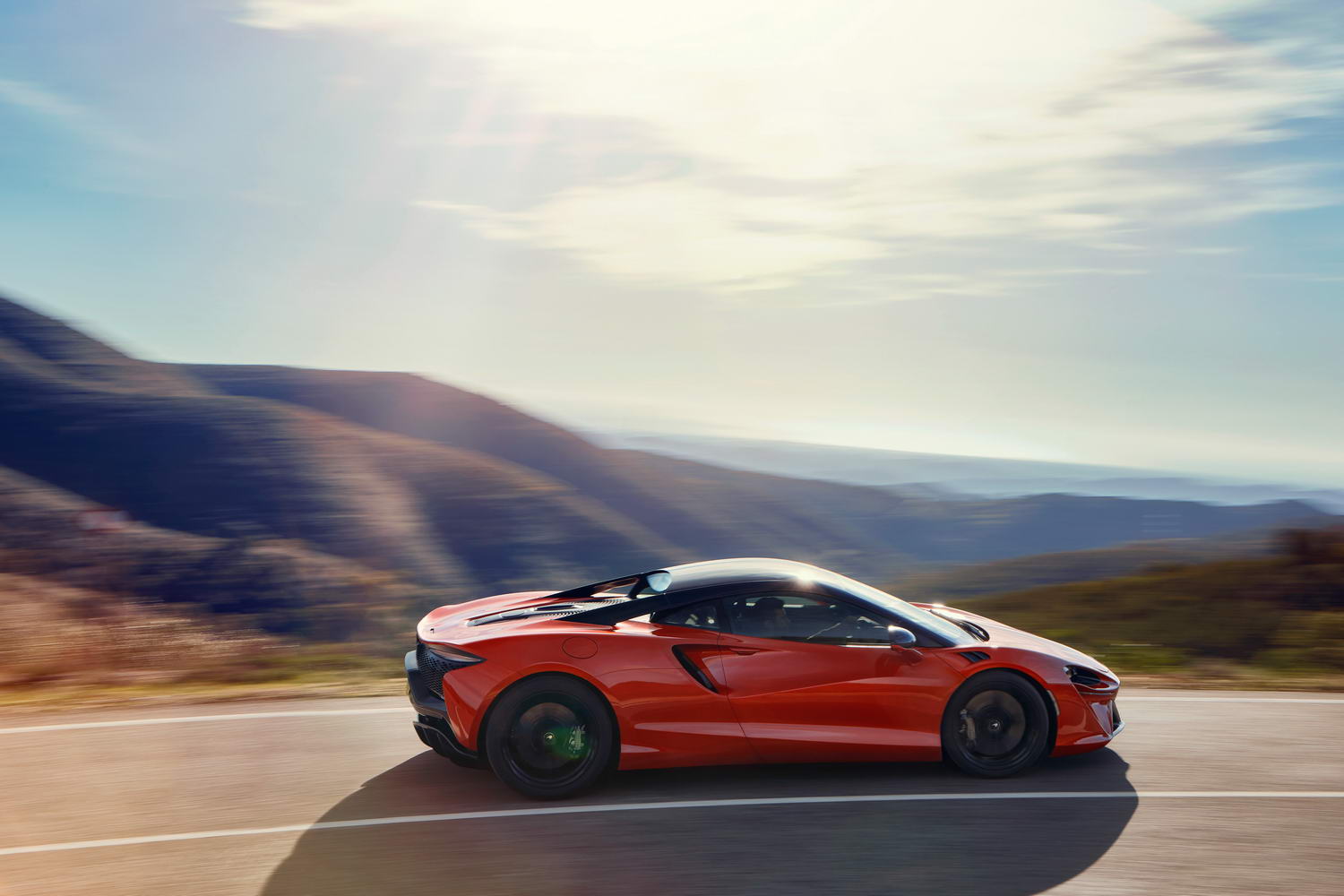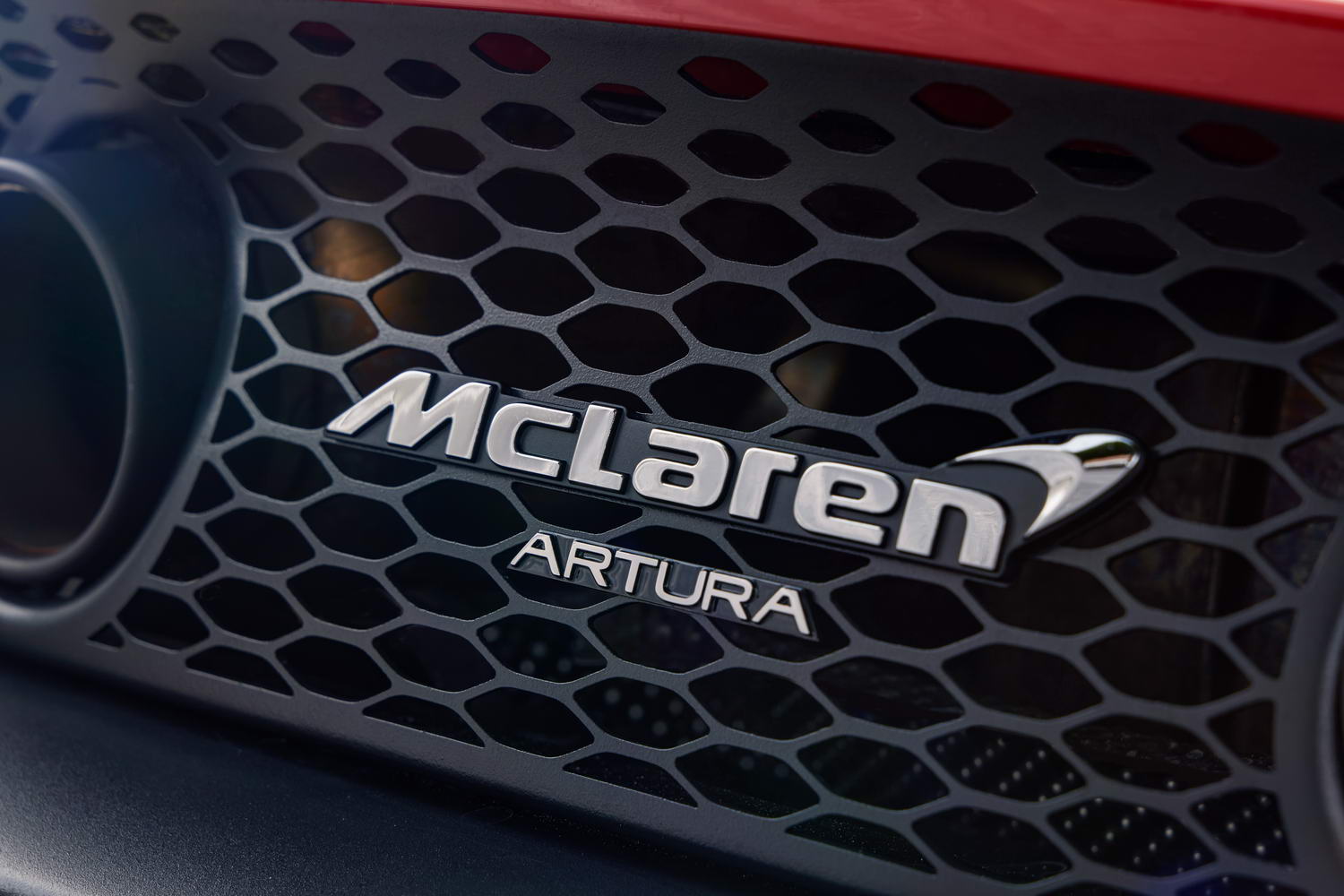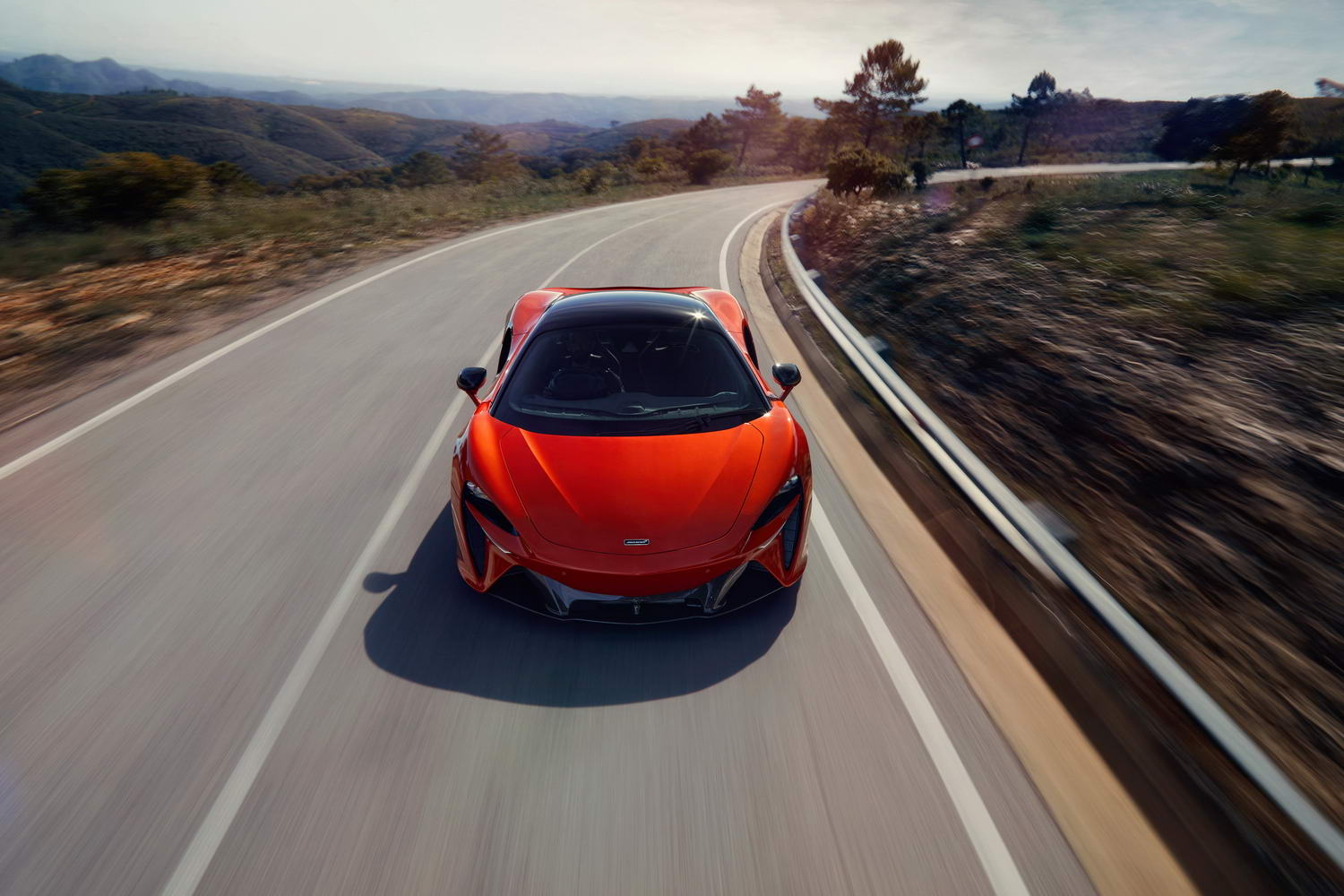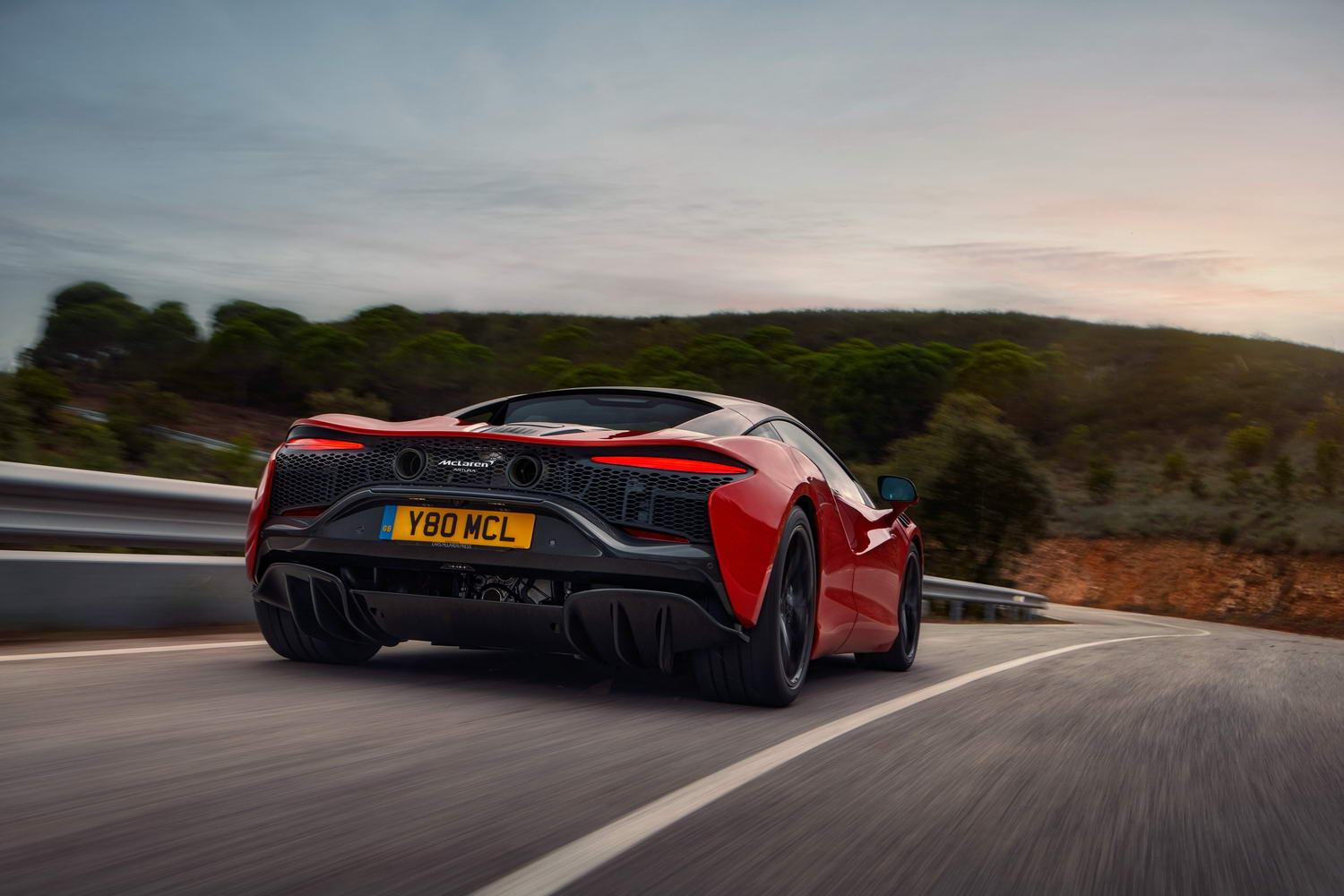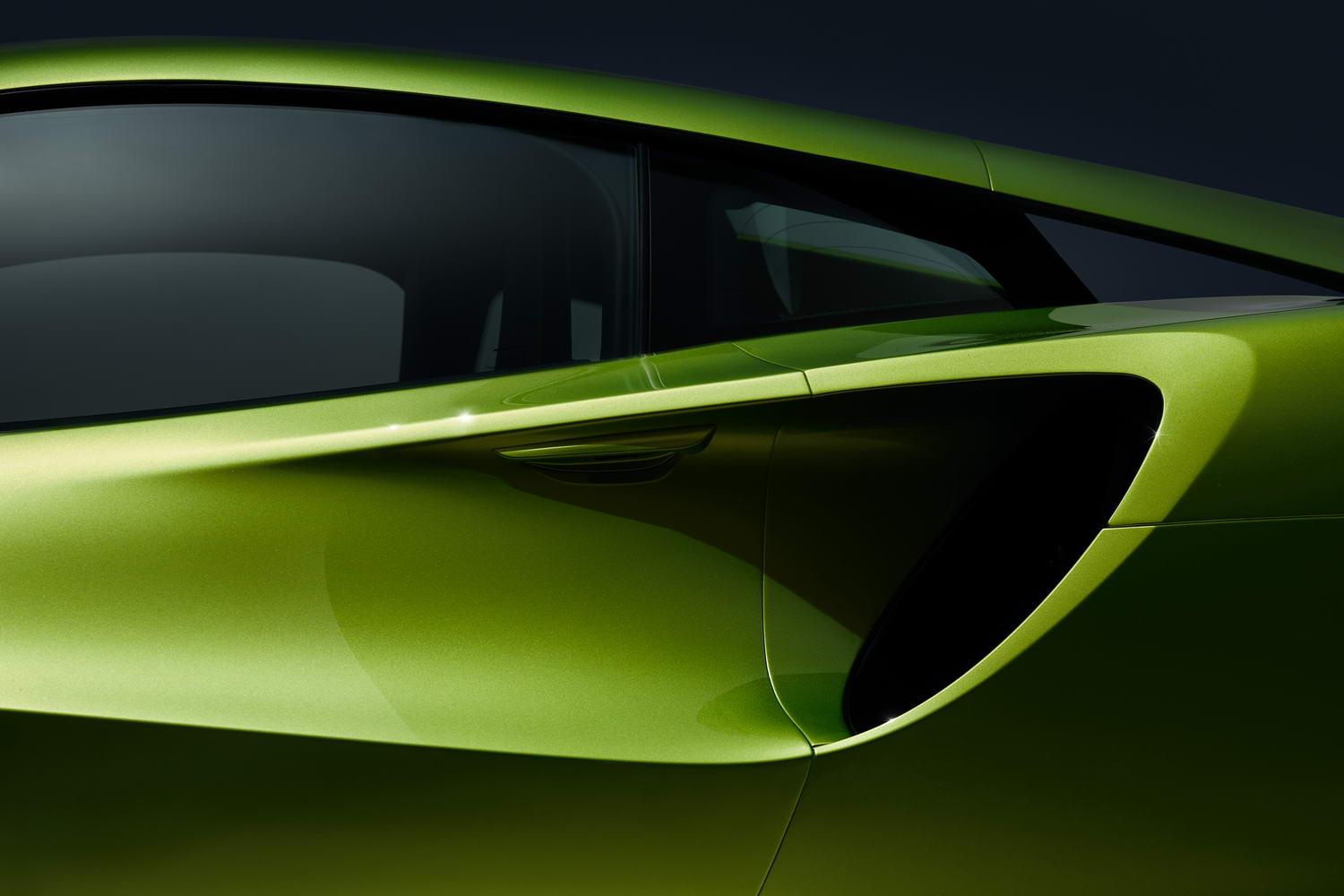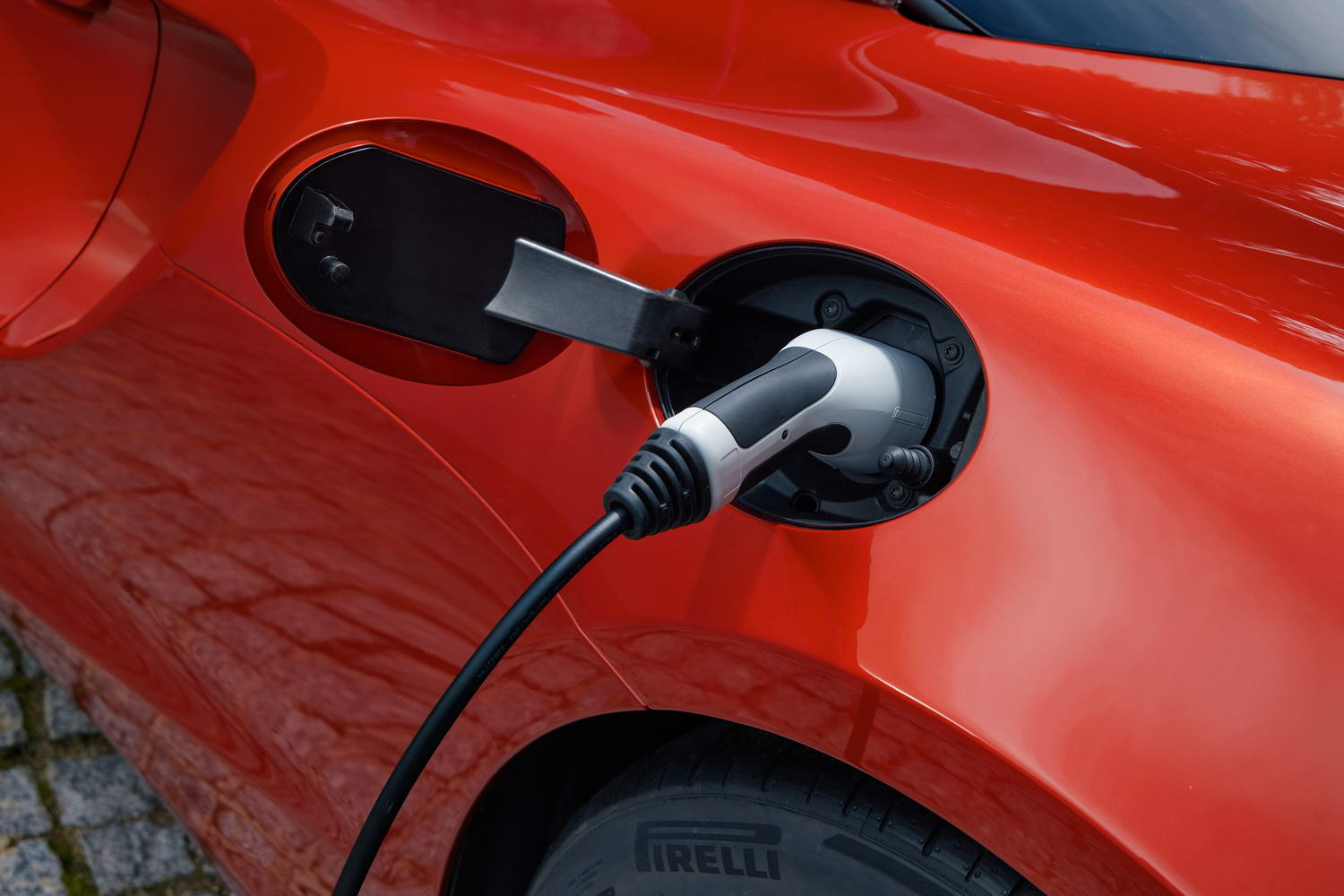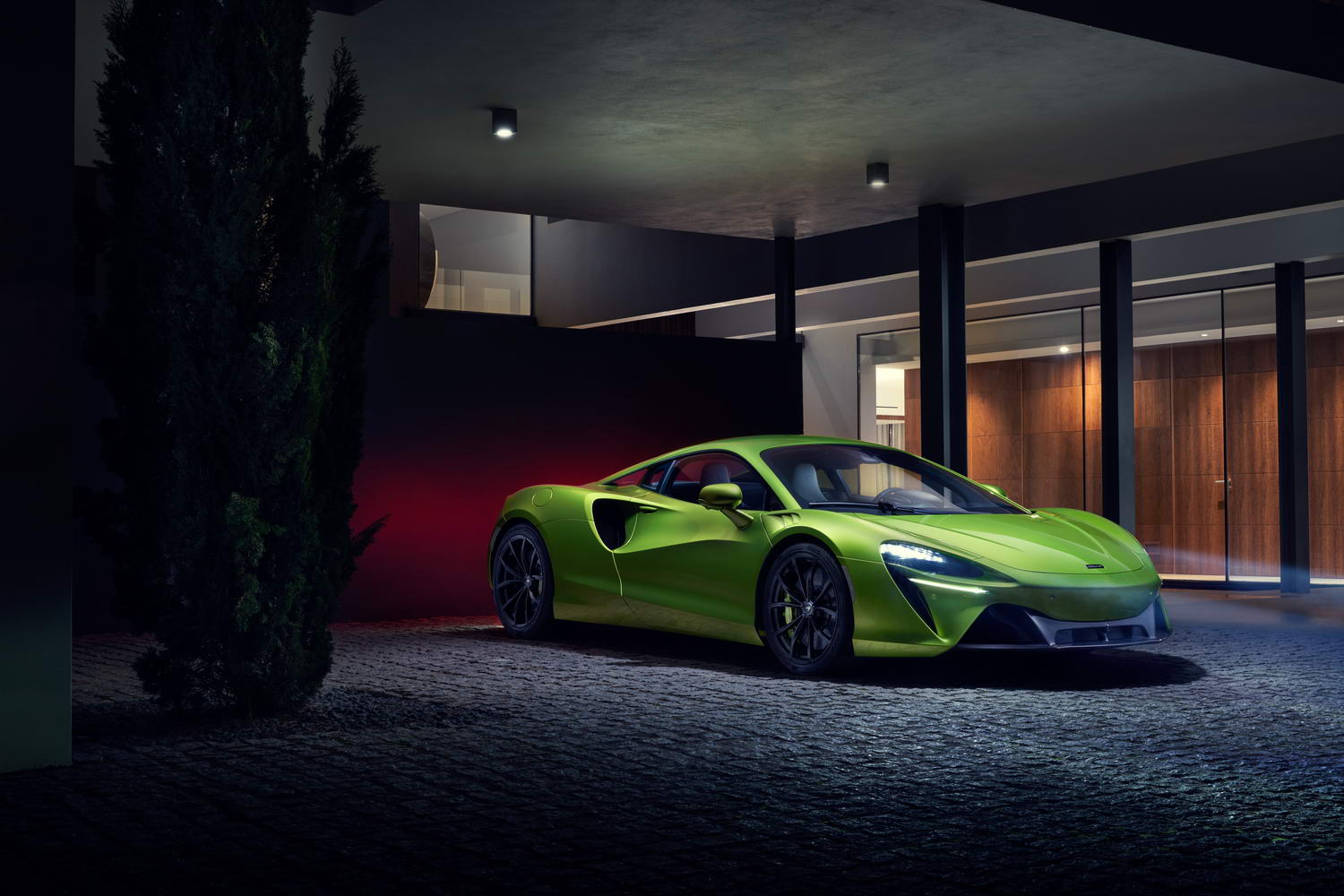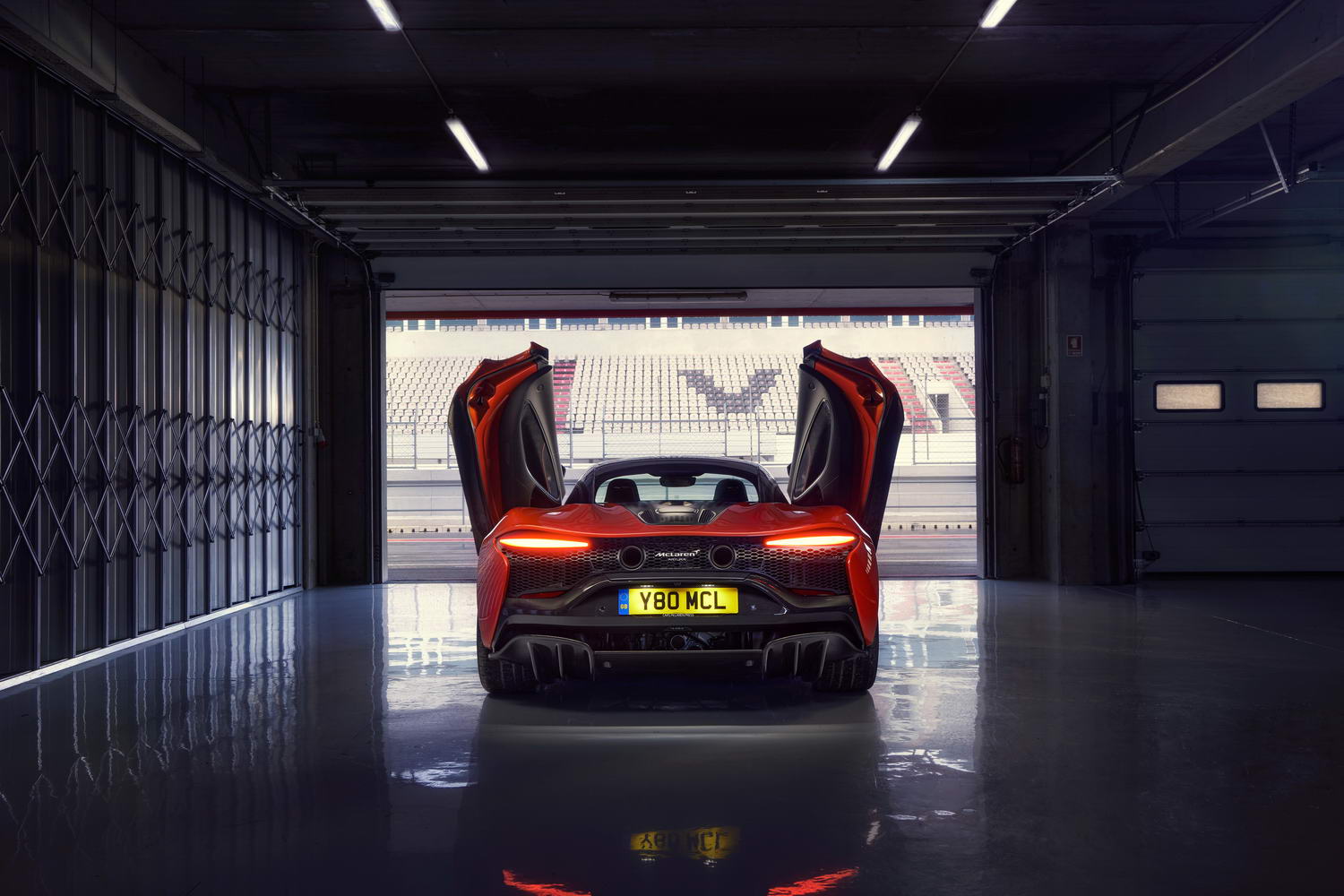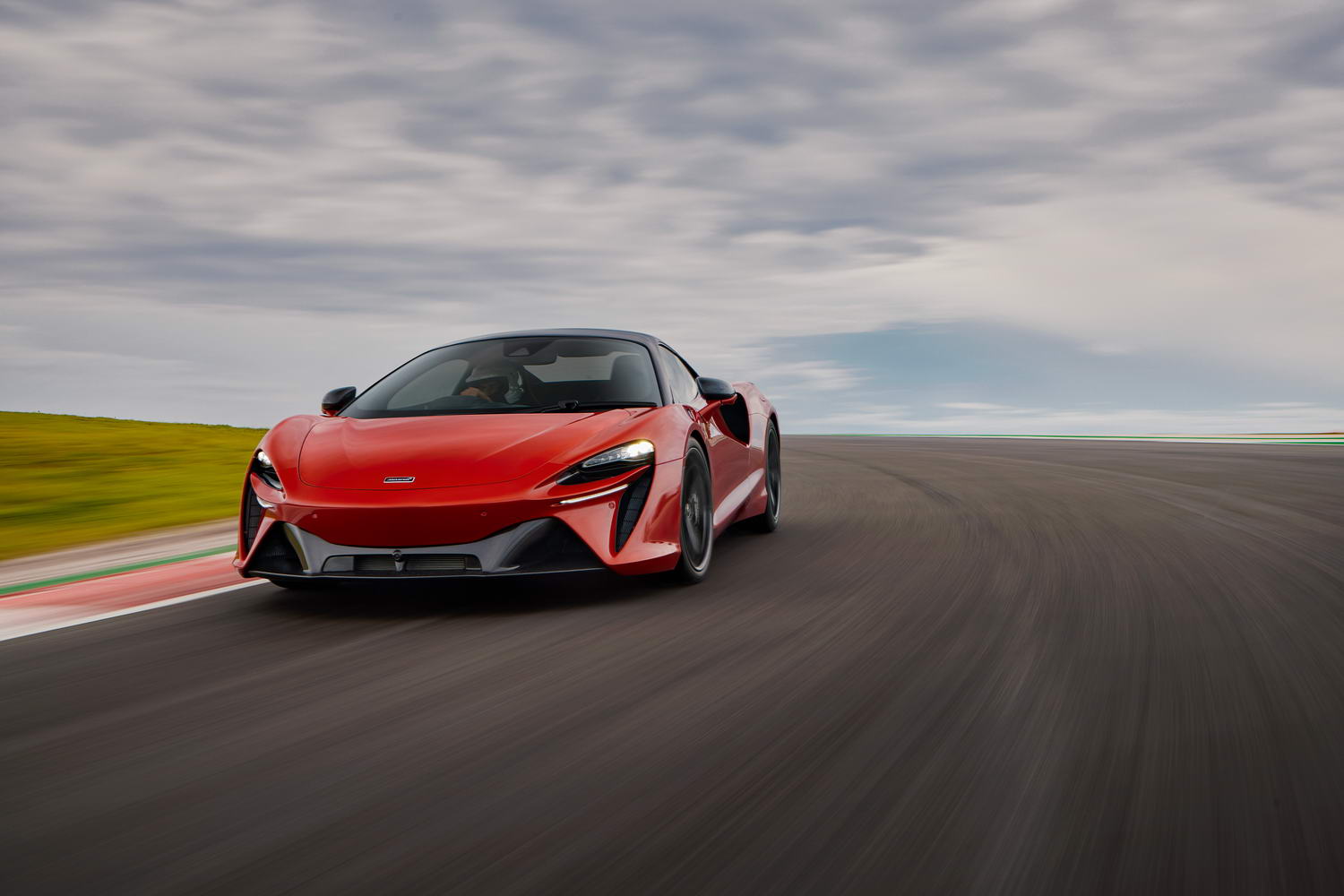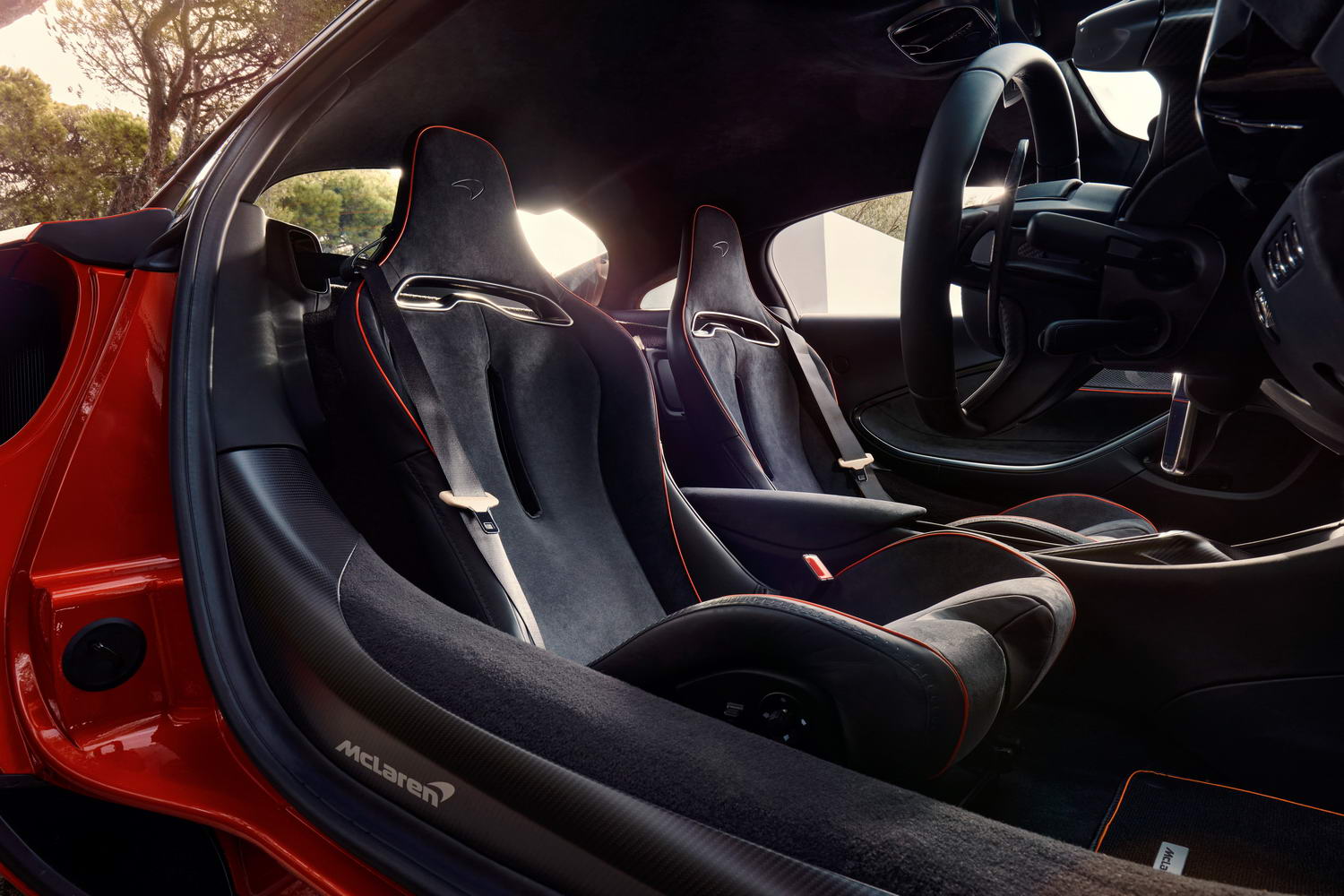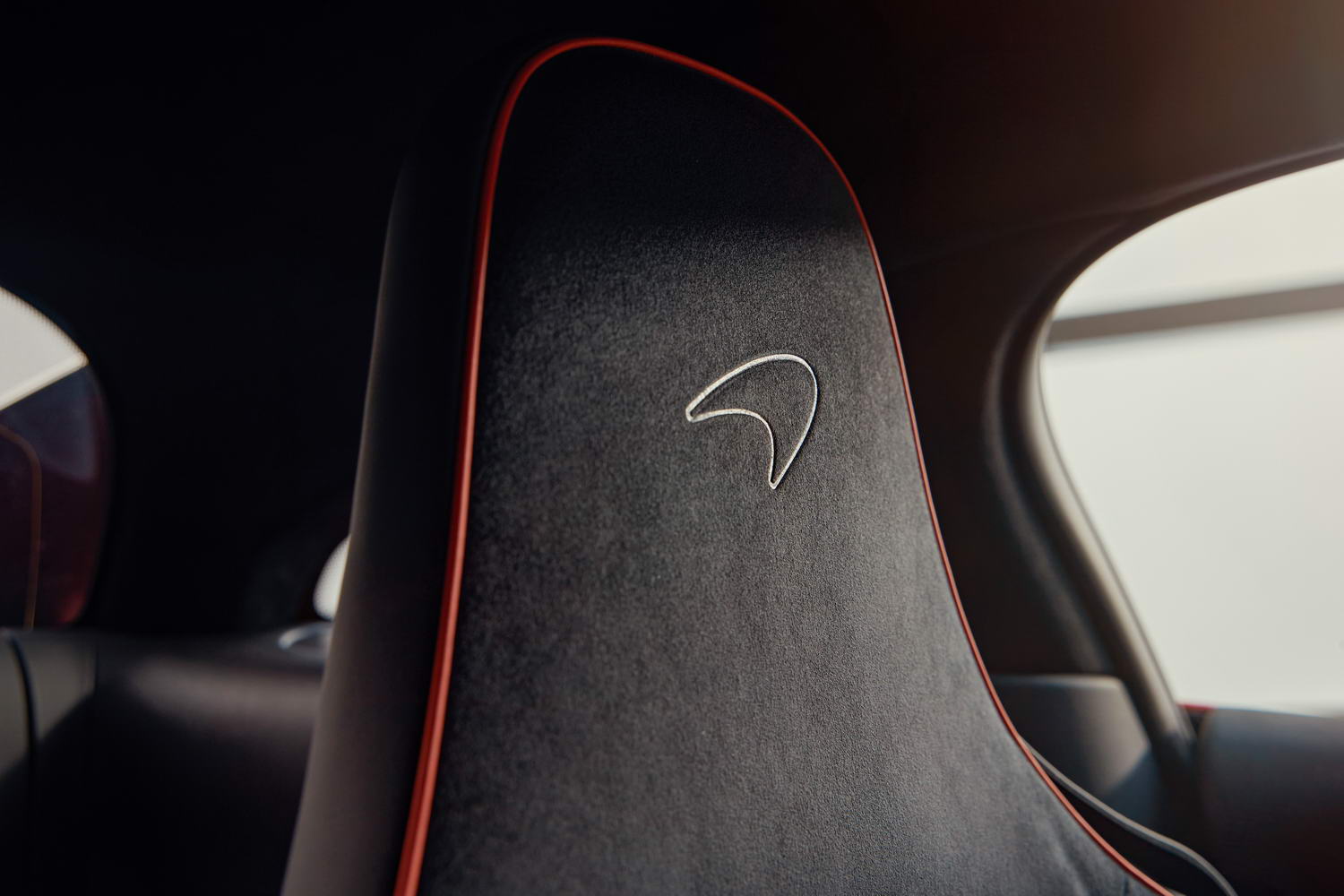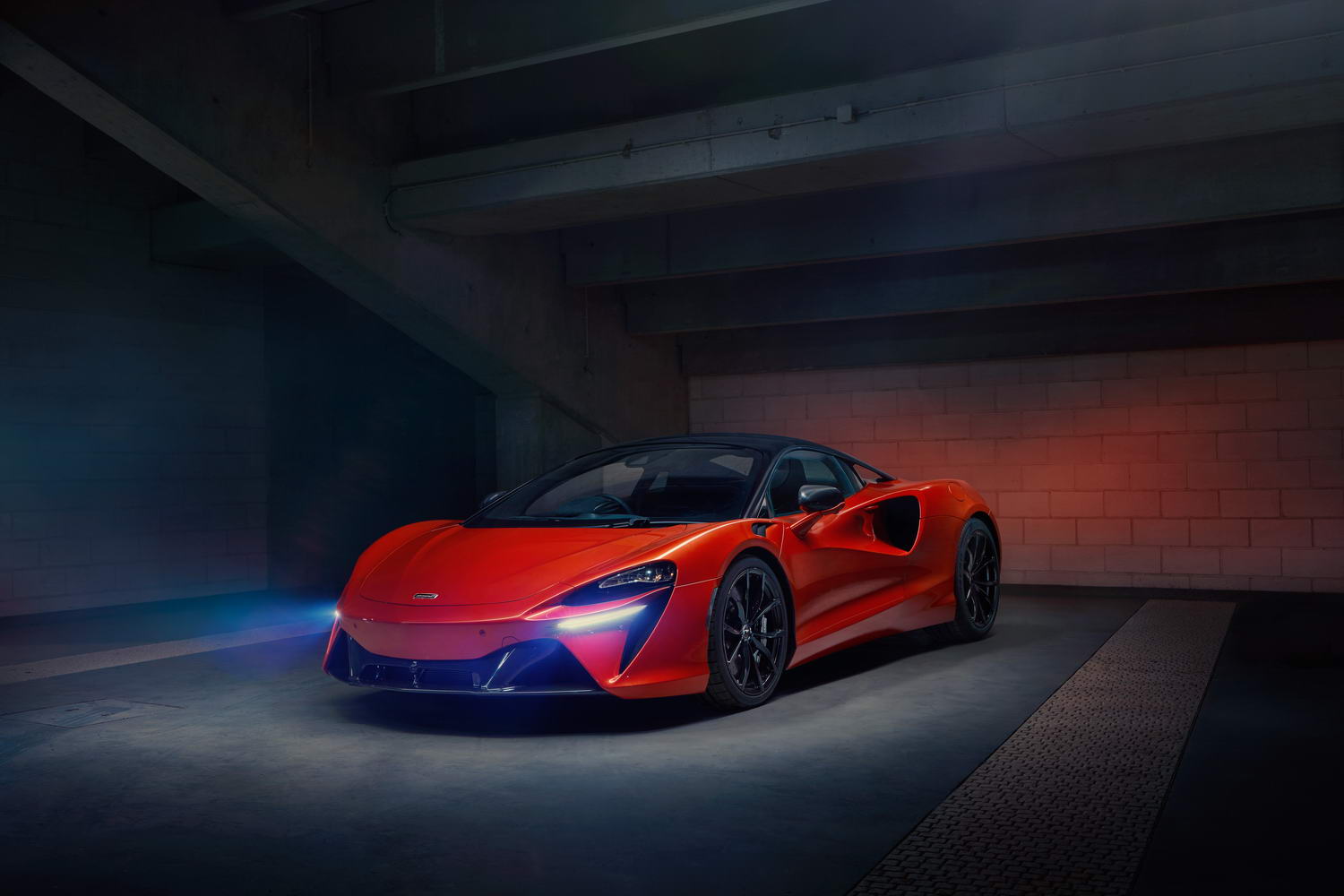This is McLaren's new era - it's the Artura, the company's brand-spanking new High-Performance Hybrid (HPH), and it heralds a fresh chassis architecture, a shift to V6 power and a future range of McLaren supercars that all have part-electrified drivetrains. McLaren invited us to its Woking HQ in England for a top-secret look at the Artura ahead of its full official unveiling, allowing us to prod and poke at it and generally have a good snoop around its make-up. Here's our rundown on what's involved in this exciting new supercar.
Sports rear, Super front
The Artura has plenty of presence up close and personal. McLaren's design director Rob Melville outlined the key aspects of its design that the company was trying to attain: "The main three strands of the Artura were: Purity; Technical Sculpture; and Functional Jewellery. It has a low roof, short rear overhang and a raked rear windscreen. But while the design is important, it must function too - so there are two intakes at the front to guide air to the outboard radiators, the vent on the wheel arch flows turbulent air out of the wheel well and means the intake behind gets freer-flowing air as a result, and there's a duct - hidden from view behind the closed doors - which channels air to the bottom of the high-temperature radiator."
Along with what Melville describes as a 'Hammerhead line' at the front of the car and a sill line that 'serves as a light catcher', the Artura is both familiar and different. It's obviously a McLaren, its overall form and dimensions pretty much matching the Sports Series cars. Indeed, from the rear three quarters, you might be tempted to think you're looking at something like a 600LT. But when you move around to the front of the Artura, it has the Super Series eye-socket headlights of a 720S or 765LT, which bestows real aggression on the newbie.
Beyond that, the McLaren HPH rides on 19-inch front, 20-inch rear alloy wheels, the wheelbase is a relatively long 2.64 metres and there are three launch colours that are called Flux Green, Ember Orange and a moody grey-black effort called Plateau. The roof is made from a single-piece of aluminium, while laser-cut mesh is used for a lot of the apertures on the car (including the tail section) and is found surrounding the 'chimney' that releases surplus heat from the V6 engine below. Yes, V6; we'll come back to that shortly. Anyway, at the back are almond-shaped LED lamp clusters, twin high-mounted exhaust exits and a deep, full-width diffuser that generates true downforce according to McLaren. The Artura also has dihedral doors that have an LED signature in them that outlines their shape at night - if the doors are situated in the raised, open position.
New structure and cabin
Underneath the attractive bodywork, the Artura is the first car to sit on the McLaren Carbon Lightweight Architecture (MCLA), much of this lightweight material coming from its McLaren Composites Technology Centre (MCTC) in the north of the UK. This leads to a lightweight vehicle overall, although there are other factors playing their part in keeping the pounds off the HPH's frame here.
Such as the ethernet architecture for the electronics. Four main controllers wirelessly manage the systems in the car, which reduces cabling throughout the bodywork by 25 per cent, trimming 10 per cent from the kerb weight and speeding up the data-transfer speeds in the process. The ethernet set-up also allows the McLaren Artura to have more advanced driver assist safety (ADAS) systems fitted, so it should play the long-distance GT as well as it provides the usual supercar performance.
Buyers of the Artura will get single-piece Clubsport seats as standard, and very accommodating these items are too (even if you're of the, er, bulkier persuasion, like this writer), but if you're after a plusher chair then Comfort seats will be an option instead. Ahead of the driver, two high-definition screens provide all the driving and entertainment information in clear, concise form to the occupants, while an ingenious design of instrument binnacle sees the chassis and powertrain mode switches mounted on the frame of the unit itself. This means that you no longer have to press an 'Active' button low down on the centre console first to switch the Artura through its various dynamic settings, and even better these mode switches are constantly within reach of your fingertips when you've got your hands on the wheel. They're also an absolute delight to operate - really solid-feeling and metallic, they're beautifully tactile. Incidentally, adjust the Artura's steering column and the whole binnacle moves with it, ensuring all drivers should find a spot-on seating position behind the wheel.
Other stylistic touches, outside and in, offer buyers the chance to have the roof finished in Gloss Black to contrast with the bodywork, while inside, three main design ambiences for the cabin are Performance (lots of Alcantara and leather), Tech (all leather) or Vision (lighter colours for the materials used, giving a fresher look).
Astonishing hybrid powertrain
So, onto the really good stuff. Jamie Corstorphine, McLaren's director of product strategy, said: "This is our third main chapter in road cars, in our second decade of operations. The Artura is all-new from the ground up and is a supercar for a new era. Its MCLA chassis will underpin all next-generation McLarens and it is as revolutionary as the MonoCell was when we launched the 12C in 2011. All of our supercars from now onwards will be electrified in some way. The Artura is designed to offer a different option to 720S Super Series buyers."
In essence, the HPH cars will replace the Sports Series in McLaren's portfolio. Corstorphine continued: "We had five main philosophies to work to with the Artura. First, throttle response is key to driver engagement and enjoyment. Second, it needed super-lightweight engineering. Third, it had to be thrilling to drive and yet easy to live with. Fourth, we wanted to offer new levels of driver interface and convenience. And fifth, it had to conform to a design vision."
That's all well and good, but it's that drivetrain that astounds. Replacing the 4.0-litre twin-turbo V8 petrol engine that has been known as the M840T for some while now, there's a 3.0-litre biturbo V6 petrol unit. Its cylinders are arranged in a 120-degree vee, with the two turbochargers located inside the banks of pistons, known as a 'hot-inside-V' arrangement, and it's fitted with a short, very stiff crankshaft that allows this six-cylinder engine to spin to a frenzied 8,500rpm. Attached to the engine is a new eight-speed dual-clutch automated transmission, as well as an electric motor housed in the gearbox, and a five-cell lithium-ion battery pack rated at a modest 7.4kWh. Corstorphine added: "This is a very different hybrid system to the ones found in the P1 or Speedtail."
To that end, the Artura has no mechanical reverse gear - going backwards is handled by the electric motor alone; this is a move that, once again, trims weight from the package. The engine itself develops 585hp and 585Nm, meaning it is nearing 200hp-per-litre without any assistance whatsoever, and it's 150mm shorter and 50kg lighter than the M840T V8. At 160kg with all of the transmission, electric motor and ancillaries bolted on, McLaren claims the V6 HPH system is still shorter than the V8 engine and lighter too, which is deeply impressive.
In fact, we've talked enough about weight throughout this piece without stating the overall figure for the new HPH. So, here we go: the Artura's lightest dry weight is 1,395kg, while for the DIN weight (driver and 90 per cent fuel load) that figure rises to a still trim 1,498kg. The company is keen to point out that some of the Artura's directly comparable rivals weigh more than 1,500kg without any hybrid systems onboard, and the most obvious competitors with part-electric drivetrains are 1,700 kilos and more. Indeed, the HPH is only 50kg heavier than a McLaren 570S overall, DIN-rated. That's light, for a hybrid.
Plenty of power
So, more on the power of the Artura. The electric motor can perform torque-infill duties at lower revs, and provides 95hp and 225Nm on its own. McLaren says the Artura can travel around 30km on electric power only, at speeds of up to 120km/h. Its part-electric properties allow the new model to record impressive eco-stats of 129g/km CO2 and in excess of 50mpg (5.7 litres/100km), although all figures associated with the Artura are yet to be fully validated. Nevertheless, the overall system outputs are 680hp and 720Nm, enough to see the 1.5-tonne Artura (power-to-weight is 488hp/tonne, dry) from 0-100km/h in three seconds flat, 0-200km/h in 8.3 seconds and on to a top speed of 330km/h.
Such impressive on-paper numbers only tell half the story, though. "The throttle response is twice as sharp as on non-hybrid McLarens," said Corstorphine. "And the drivetrain balances its resources according to the driving modes. So in Electric Mode, it can do more than 120km/h, while in Comfort Mode it will turn the engine off if the owner is travelling at less than 40km/h. But in Sport and Track Modes, the powertrain delivers maximum performance - acceleration and engagement are prioritised, over and above electric-driving range."
Then there are the underpinnings. McLaren says the 120-degree nature of the V6 means it can be mounted low in the Artura's bodywork, which not only results in a low centre-of-gravity, but which also allowed the company's engineers to design wholly new multilink, wishbone rear suspension. The HPH also employs a lightweight electronic differential at the back, while steering is handled by a hydraulic system. Proactive Damping Control is a development of the fancy suspension system seen on the 720S and even the Artura's tyres are high-tech - they're a bespoke set of Pirelli P Zeros with the Italian firm's 'Cyber Car Technology'. This means a chip in the rubber transmits tyre temperatures and pressures on the move. Carbon-ceramic brakes with forged lightweight callipers, these items available in seven different colours, are offered and the Artura HPH has a 72-litre fuel tank to give it suitable cruising range.
Finally, charging details. The lithium-ion battery pack is said to have 33 greater power density than the unit fitted to the McLaren P1, although 7.4kWh isn't a massive capacity in the grand scheme of things. That said, it can be replenished through the onboard 11kW AC charger in 2.5 hours (due to the slowing of charging rates outside of the 5-80 per cent optimum zone) and the Artura is fitted with a Type 2 electric port, while it comes with a Mode 3 cable as standard. McLaren will offer a six-year battery warranty, a five-year vehicle warranty and a ten-year body warranty on the Artura HPH, giving owners as much peace of mind as possible for their investment.
So, having seen it in the metal and having sat in its impressive cabin, we're now eager for a first drive in this pioneer for a new generation of McLaren supercars. The Artura's launch should take place in spring 2021, so we'll hopefully be bringing you more details then.

